GREEN GUIDE























President Victoria Riskin
CEO Raymond Pearce
Editor Jamie Kageleiry, editor@bluedotliving.com
Senior Editor Brittany Bowker
Senior Writer Leslie Garrett
Chief Financial Officer David Smith
Associate Editors Julia Cooper , Lucas Thors
Copyeditor Laura Roosevelt
Creative Director Tara Kenny
Designer/Production Manager Whitney Multari
Design and Production Vesna M. Nepomuceno
Digital Projects Manager Kelsey Perrett
Digital Assets Manager Alison Mead
Contributing Editors Mollie Doyle, Catherine Walthers
Ad Sales Josh Katz, adsales@bluedotliiving.com •
Bluedot and Bluedot Living logos and wordmarks are trademarks of Bluedot, Inc.
Copyright © 2024. All rights reserved.
Bluedot Living: At Home on Earth is printed on recycled material, using soy-based ink, in the U.S.
Bluedot Living magazine is published quarterly and is available at newsstands, select retail locations, inns, hotels, and bookstores, free of charge. Please write us if you’d like to stock Bluedot Living at your business.
Editor@bluedotliving.com
Sign up for the Martha’s Vineyard Bluedot Living newsletter, along with any of our others: the BuyBetter Marketplace, our national ‘Hub” newsletter, and our soon-to-be-launched Bluedot Kitchenr: bit.ly/MV-NEWSLETTER
Subscribe! Get Bluedot Living Martha’s Vineyard and our annual Bluedot GreenGuide mailed to your address. It’s $24.95 a year for all four issues plus the Green Guide, and as a bonus, we’ll email you a collection of Bluedot Kitchen recipes. Subscribe at bit.ly/MVBluedotSubs
Read stories from this magazine and more at marthasvineyard.bluedotliving.com



When we launched Bluedot Living three years ago this month, we sought to tell stories of Islanders trying to live more sustainably each day — in the ways they cooked, planted, cleaned, shopped, and renovated. We’ve loved meeting these people and sharing their stories with you about how they figured out how to do this.
But we also found ourselves wishing there were a guide that would just lay out the myriad local resources (libraries, secondhand stores, environmental nonprofits) that offer tools and goods, tell us what plants to plant, how to identify and protect local species, what wild local fish are in season and how to prepare them.
We created the Green Guide to do just that. Hang on to it for a year, then we’ll release an updated one. The Green Guide tells you where to find seed libraries, what you can or can’t recycle, what to do with your food waste, how to get rid of things when Chicken Alley won’t take them, and what our local environmental organizations are doing to preserve our biodiversity, and strengthen and enrich our communities.

If you have ideas on what we can add to this guide in the future, please write us at editor@bluedotliving.com.
We appreciate the support of all our advertisers, and the
Thank you.
– Jamie Kageleiry


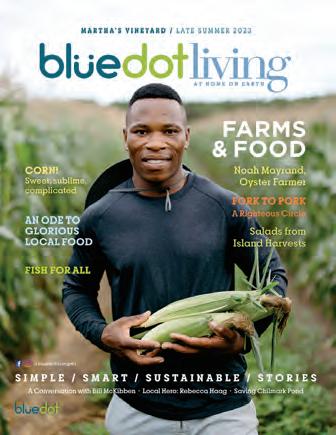


•
•



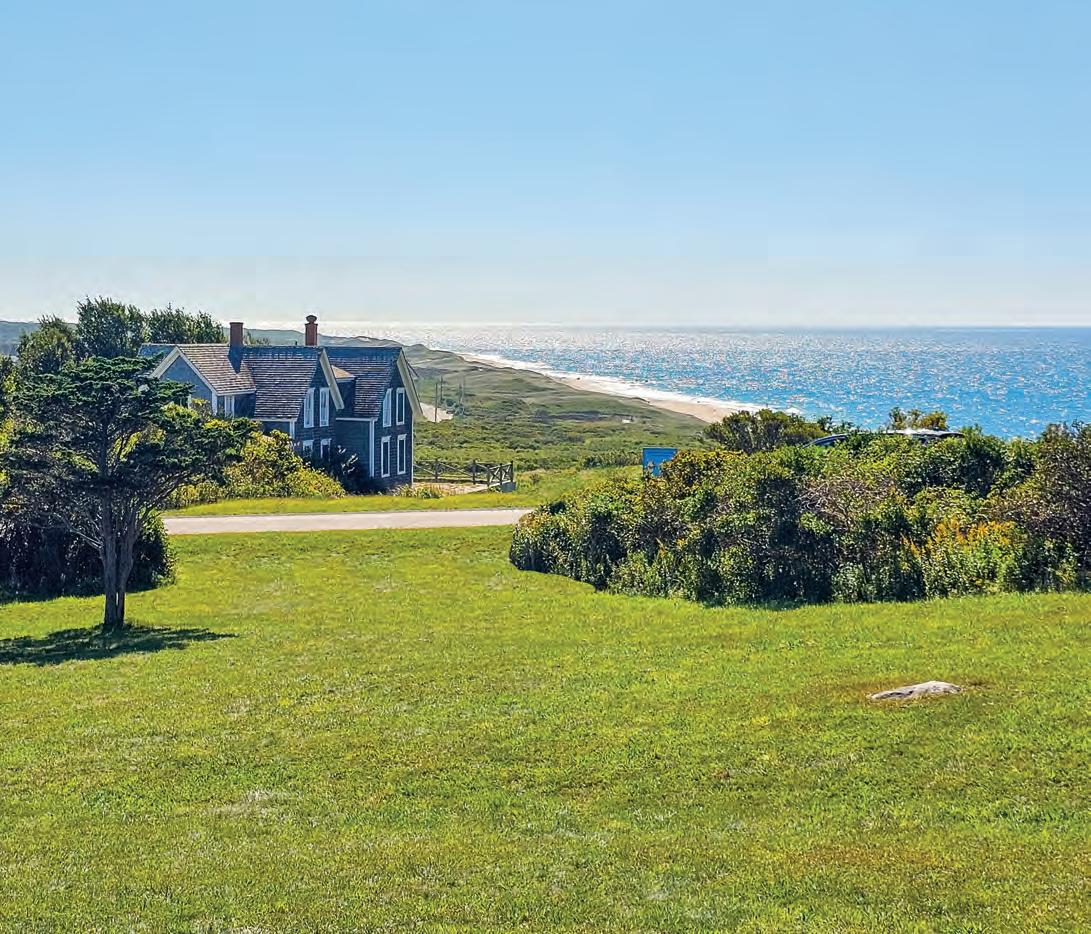





Members of Island conservation organizations, climate committees, and other environmental groups are working together to nourish beaches, protect vulnerable plant and animal species from habitat loss, and maintain the natural beauty and biodiversity of the Vineyard. But each town faces different challenges, and is implementing different strategies to deal with current and future threats to our environment. Here’s a town-by-town update highlighting important projects.
The Oak Bluffs Tree Stewards, a newly established community group looking to beautify town parks, held its second tree planting recently. More than twenty volunteers gathered on a brisk weekend morning to plant ten new trees across three parks in town — Niantic, Nashawena, and Viera. A similar tree-planting initiative in November of 2023 kicked off the long-term plan to fill all Oak Bluffs parks with native trees. Because mature trees with root balls can be inordinately expensive, and often require heavy machinery or a professional landscaping crew, the Oak Bluffs Tree Stewards have opted to plant bare-root trees. These trees are lightweight and significantly more affordable, so the entire community can be involved, and many trees can be planted. To volunteer, or donate, email OBTreeStewards@gmail.com.
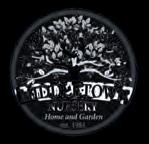

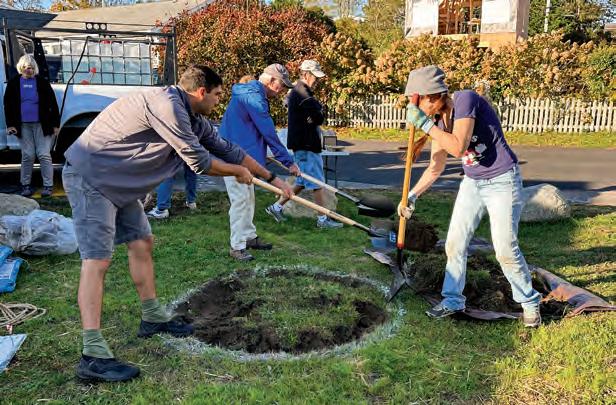

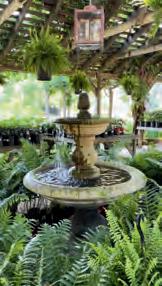
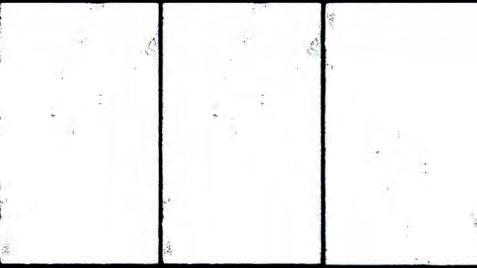
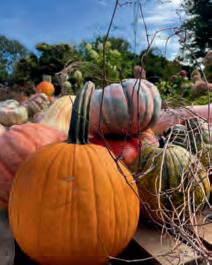
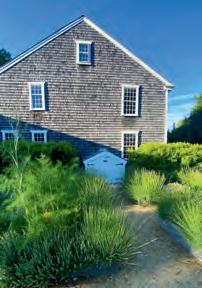
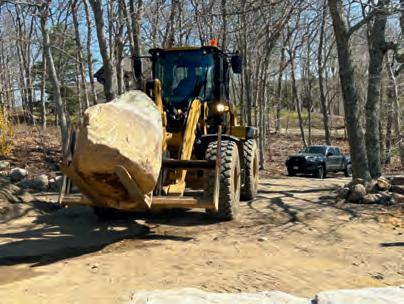


After a series of devastating storms, Edgartown officials are looking to replenish the dunes at South Beach and plant beach grass in time for seasonal visitors to enjoy. So far, 3,700 cubic yards of sand has been sourced to shore up the left fork. Snow fencing will also be installed along South Beach, and the Edgartown parks commission is looking to relocate its headquarters, which also served as a base for lifeguards and a storage area for beach management equipment, after the building was damaged by a major storm. Officials are considering more long-term solutions to erosion and storm damage, but for now the only fixes in the town’s tool belt are temporary.
Rising sea levels and increased frequency and intensity of seasonal storms have caused Vineyard Haven’s working waterfront district to be regularly inundated. A new plan presented to Tisbury officials by the University of New Hampshire’s Stormwater Center would combine three outfall pipes at Beach Street Extension into one structure that could be more easily maintained and quickly cleared of sediment buildup. The new system would also create an emergency flood outlet that would divert water away from Five Corners. This project, which the town anticipates will cost no more than $400,000, was spurred by frustration around a lack of progress from MassDOT, which has been working to reduce flooding in the area.
The West Tisbury Complete Streets Committee, a subcommittee of the West Tisbury Planning Board, is working with Martha’s Vineyard’s state highway division to ensure that the town’s shared use paths are fully integrated into our town (and state) roads. Non-vehicular ways are traversed in many different ways — horses, bikes, pedestrians, and more — all with the goal of getting from point A to point B without significant impasses. Along with a number of important projects that were recently completed, such as improving the Lambert’s Cove parking area to encourage more seasonal visitors to enjoy the beach, and putting in crosswalks at a number of busy intersections (like the one near the Ag Hall), the Complete Streets Committee is working on improving the segment of the shared use path that runs from Mill Pond to the West Tisbury library. Another major project the committee is working on is improving safety at the North Tisbury bridge, just past Polly Hill Arboretum. With West Tisbury (and other Island towns) looking to go fossil fuelfree by 2040, the Complete Streets Committee aims to reduce vehicular transportation and encourage islanders and visitors to get out and walk, ride their bikes, and mitigate carbon emissions.
The town of Chilmark is in the process of installing two DirectCurrent fast charging stations for EVs, in addition to the two
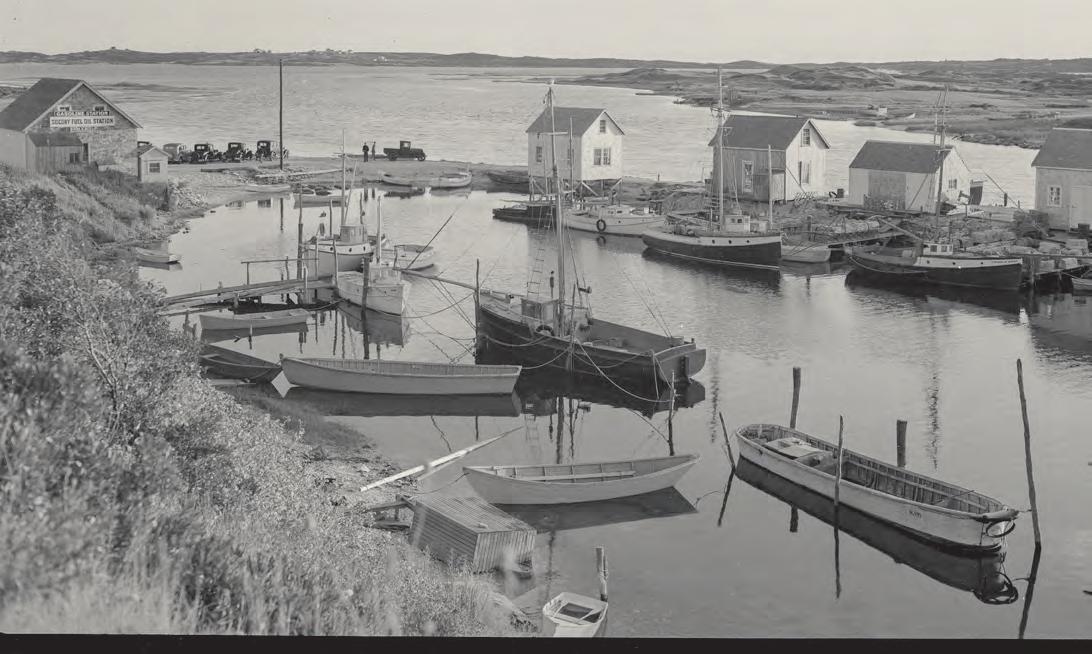
On our one-year anniversary as the first B Corporation certified bank in Massachusetts, our deep connections to community, local business, and environment continue to inspire our mission of banking as a force for good.
moderate-speed chargers already installed at the Chilmark School. Another notch on Chilmark’s climate and energy belt is the recently completed conversion of the Chilmark School to fully electric HVAC, making Chilmark the first town to have a fully-electric heated and cooled school. Along with that, the project ensured that the school’s building envelope was secure, and addressed a number of other energy efficiency-oriented projects. Now that the new firehouse and EMS buildings in Chilmark have been completed, town officials are looking to install solar panels on the roofs of both facilities, and could potentially install panels on the town hall. The town has gained access to a federal government program to conduct technical scoping work for the ambitious resilience project at town center. Chilmark has teamed up with Aquinnah to be a part of this program, and Aquinnah is following similar steps toward resilience. During the planning process, officials will consider distributed battery storage to work in conjunction with solar panels. The town is exploring the possibility of using microgrid technology to enable town facilities to be cut off from the central energy grid and run independently for a short period of time.
The town of Chilmark is in the process of installing two
Direct-Current fast charging stations for EVs, in addition to the two moderate-speed chargers already installed at the Chilmark School.
With federal assistance, Aquinnah is working to design a microgrid for its town buildings — a combination of a solar array and battery that will enable town functions, including a warming shelter, to keep going if a storm or other disaster knocks out the grid. (Chilmark has a parallel project.) The Wampanoag Tribe, with town support, has applied for a state Municipal Vulnerability Preparedness grant to return the iconic Aquinnah Shop restaurant to Indigenous ownership and restore it. The restaurant last operated in 2022, and saw its first non-Wampanoag ownership in 2016. It would be purchased by the Aquinnah Land Initiative, a land conservation group run by local Wampanoag women. Working to preserve Aquinnah's renowned natural wonder, the Gay Head Cliffs, town officials and climate experts are preparing to apply for a similar grant to study erosion of the Cliffs and test anti-erosion methods.
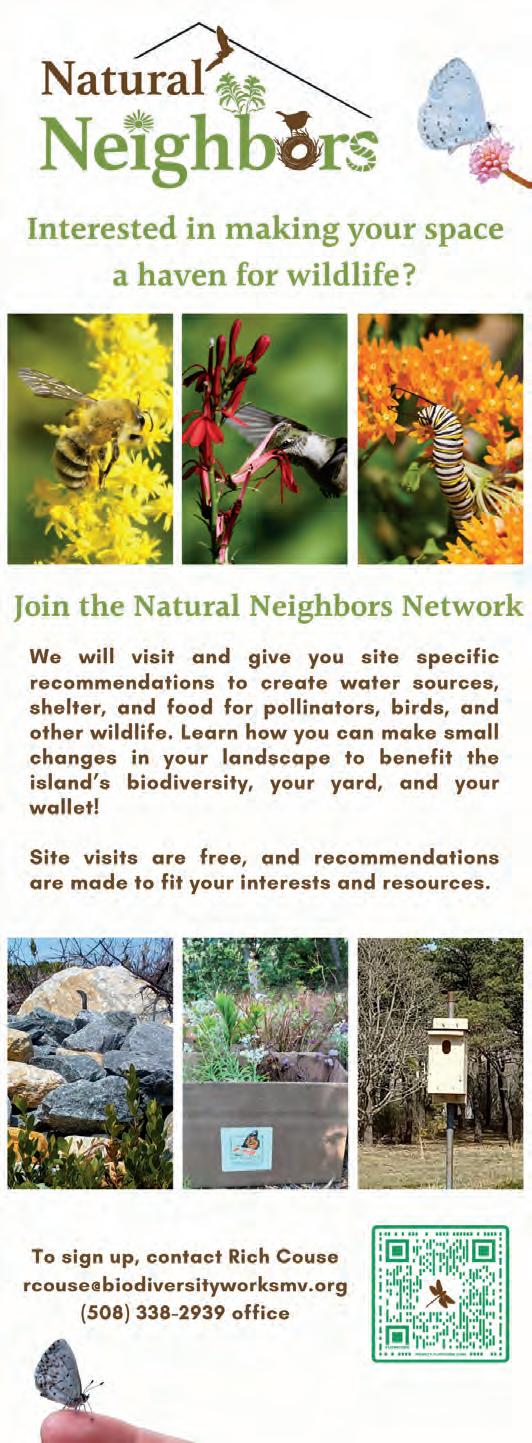
Recycle, compost, volunteer, write your rep, buy secondhand.
See this online at bit.ly/MV-HANDBOOK.
See our How to Get Rid of Anything Guide at: bit.ly/GET-RID
LIBRARIES
LITTLE FREE LIBRARIES
Little Free Library is a non-profit organization that empowers communities to spread a love of reading through neighborhood book exchanges. At mailbox sized kiosks maintained by the community, passersby are encouraged to take a book, or leave a book. There are five Little Free Libraries on Martha’s Vineyard, including one on Chappaquiddick. Find a Little Free Library near you by visiting bit.ly/littlefree-library-mv.
AQUINNAH PUBLIC LIBRARY
1 Church Street, Aquinnah; aquinnahlibrary.org
Tuesday, Thursday 12:00 pm – 6:00 pm; Saturday 11:00 am – 4:00 pm
CHILMARK PUBLIC LIBRARY
522 South Road, Chilmark; chilmarkma.gov/chilmark-library
Off Season: Tuesday, Thursday, Saturday 10:30 am –5:00 pm; Wednesday 10:30 am – 6:00 pm; Friday 10:30 am – 1:30 pm
Summer: Monday, Friday 10:30 am – 1:30 pm; Tuesday, Thursday, Saturday 10:30 am – 5:00 pm; Wednesday 10:30 am – 6:00 pm
LIBRARY OF THINGS
Patrons of the Chilmark Public Library can check out a wide variety of items from their Library of Things. These items include power tools, kitchen
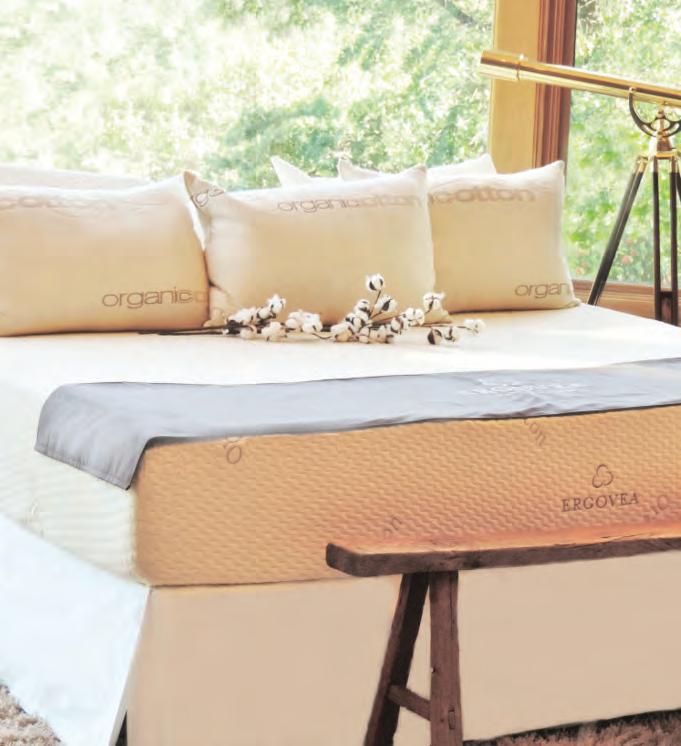

The Island’s source for organic mattresses, pillows, and bed linens.
Ergovea is our organic and natural latex mattress brand, providing the purest night’s sleep; Ergovea’s pillows are paradise.
Sleep and Beyond provides toppers, sheets, pillows, comforters and more of your bedding needs.

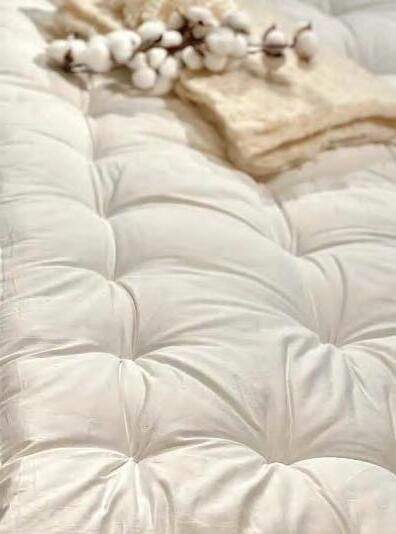
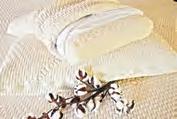
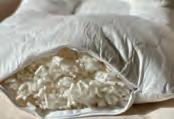

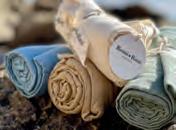

equipment, memory care kits, starfinder kits, gardening kits, birdwatching kits, board games, lawn games, instruments, knitting kits, and audio/video kits. Visit bit. ly/chilmarklib-things for a full list of items.
EDGARTOWN PUBLIC LIBRARY
26 West Tisbury Road, Edgartown; edgartownlibrary.org
Monday, Thursday – Saturday 10:00 am – 5:00 pm; Tuesday, Wednesday 10:00 am – 6 pm
LIBRARY OF THINGS
Patrons of the Edgartown Public Library can check out a wide variety of items from their Library of Things. These items include Chromebooks, wi-fi hotspots, Nintendo Switch, slow cooker, guitars and ukuleles, and Pilestone colorblind glasses. Visit https://bit.ly/edglibthings for a full list of items.
This series of events is produced by Friends of Sengekontaket, Lagoon Pond Association, Tisbury Waterways Inc., and the Martha’s Vineyard Shellfish Group. These talks aim to provide Islanders with a practical guide to protecting our coastal ponds.
Previous events in this series included a presentation from UMass Dartmouth coastal systems scientists on why nitrogen matters and how individuals can contribute to solutions at the Oak Bluffs Public Library, and a walk with local experts through a rewilded property to learn the benefits of a wild lawn. In October (date and time TBD), the Edgartown Public Library will host “Septics for Skeptics.”
OAK BLUFFS PUBLIC LIBRARY
56R School St, Oak Bluffs; oakbluffslibrary.org
Off Season: Tuesday, Thursday 10:00 am – 6:00 pm; Wednesday 8:00 am – 5:00 pm; Friday 10:00 am – 5:00 pm; Saturday 10:00 am – 4:00 pm Summer (June – August): Tuesday 10:00 am – 6:00 pm; Wednesday 8:00 am – 5:00 pm; Thursday 10:00 am –8:00 pm; Friday 10:00 am – 5:00 pm; Saturday 10:00 am – 4:00 pm
LIBRARY OF THINGS
Patrons of the Oak Bluffs Public Library can check out a wide variety of items from their Library of Things. These items include board games, birding backpacks, wi-fi hotspots, fishing and clamming equipment, lawn games, beach supplies, radon detector, sensory equipment for children, sewing machines, DVD players,



metal detectors, induction cooktops, home repair and bike repair kits, and knitting and crochet kits. Visit https://bit.ly/oblib-things for a full list of items.
Each September, the Oak Bluffs Public Library celebrates Maritime Month to honor local mariner Gordon Goodwin whose family donated a memorial fund to the Library Friends of Oak Bluffs with the request to add maritime collections and programming in the library. Events during Maritime Month have included learning to shuck oysters and recycle their shells with MV Shellfish Group, beach clean ups, and learning about how shellfish conservation has evolved on the Island over the last 50 years.
VINEYARD HAVEN PUBLIC LIBRARY
200 Main Street, Vineyard Haven; vhlibrary.org
Monday, Saturday 10:00 am – 5:00 pm; Tuesday – Thursday 10:00 am – 6:00 pm; Friday, Sunday 1:00 pm – 5:00 pm
VINEYARD POWER ENERGY ASSESSMENTS
Vineyard Power frequently hosts workshops at the Vineyard Haven Public Library to discuss how homeowners can make the most of no-cost energy
assessments, rebates for energy-efficient home heating appliances, assistance in adopting renewable energy resources, and other incentives to transition away from fossil fuels.
1042 State Road, West Tisbury; westtisburylibrary.org Monday – Wednesday 10:00 am – 6:00 pm; Thursday 9:00 am – 6:00 pm; Friday 10:00 am – 5:00 pm; Saturday 9:00 am – 5:00 pm; Sunday 12:00 pm – 4:00 pm
!"#$ %&'()#*+"& ,-./&")"01 %34
!"#$ %&'()#*+"& ,-./&")"01 %34
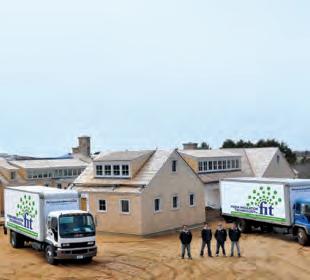

Patrons of the West Tisbury Public Library can check out a wide variety of items from their Library of Things. These items include lawn games, board games, instruments, a bicycle tool kit, and light therapy lamps, DVD/Blu-Ray/streaming video players, Kindle, Nintendo Switch, portable boom boxes and CD players, Chromebooks and laptops with Microsoft Office, wi-fi hotspots, tire inflators and car battery chargers, paper shredders and scanners, adventure backpacks, social media influencer kits, home energy detective kits, homework kits, mindfulness kits, microscopes, cassette and record player convertors, and art kits. Visit bit.ly/wtlibthings for a full list of items.
• Reduce energy consumption by 50%
• Reduce energy consumption by 50%
67859:959;9; <<< !=>?%3@AB>,%=3,C4D3=B=EF 4=?
• Drastically reduce moisture movement
!=>?%3@AB>,%=3,C4D3=B=EF 4=?
• Drastically reduce moisture movement
67859:959;9; <<< !=>?%3@AB>,%=3,C4D3=B=EF 4=?
!=>?%3@AB>,%=3,C4D3=B=EF 4=?
• Add comfort and durability to your home or building
• Add comfort and durability to your home or building
Locally owned and operated on Martha’s Vineyard since 2004
Locally owned and operated on Martha’s Vineyard since 2004
CALL TODAY FOR A FREE QUOTE!
CALL TODAY FOR A FREE QUOTE!
A collaborative project of the West Tisbury Library, Island Grown Schools, Polly Hill Arboretum, Whippoorwill Farm, and local home gardeners, the Seed Library brings the knowledge of how to save seeds back to our Island community while creating a central space where seeds can be freely shared. For more info on events, follow their Facebook page at https://bit.ly/mv-seed-library.
PO Box 1570, West Tisbury, MA 02575
PO Box 1570, West Tisbury, MA 02575
508-696-6363 • www.fitmv.com • info@fitmv.com
508-696-6363 • www.fitmv.com • info@fitmv.com
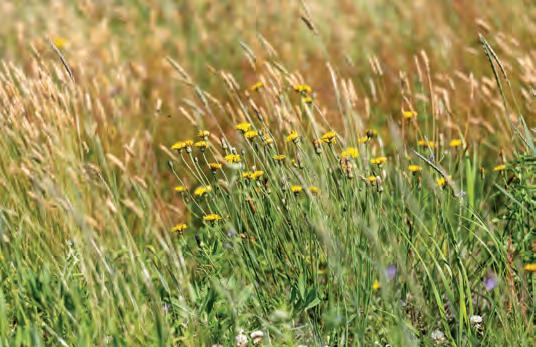
On Martha’s Vineyard and across Massachusetts, we are working to ensure nature and people thrive.
Learn more at nature.org/mass
© Hayley McManus
The West Tisbury Library provides copies of books and access to audiobooks for the Climate Book Club. Members gather monthly at the library to discuss both fiction and non-fiction titles that explore the many dimensions of the climate crisis. For more information, contact Nicola Blake at nblake64@gmail.com.
From garden planning, to biochar workshops, to seedling swaps, the West Tisbury Public Library has an events calendar packed with eco-programming and more: bit.ly/wtlib-events.
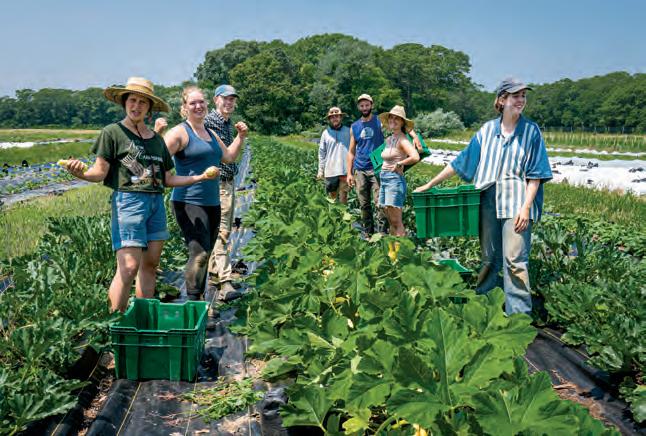
POLLY HILL ARBORETUM GROUNDS VOLUNTEERS
Starting in June, volunteers are welcome to work with staff at the 70-acre West Tisbury public garden on activities like planting, pruning, weeding, and mulching. To learn more about volunteering opportunities, email info@pollyhillarboretum.org.
GLEAN WITH ISLAND GROWN INITIATIVE
Island Grown Initiative works to build a regenerative and equitable food system on Martha’s Vineyard. Volunteers can help IGI harvest fresh local produce for Islanders in need. No experience needed. Gleaning takes about two hours and volunteers may keep a share of the harvest for themselves. To sign up, go to igimvg.org/volunteer.php.
COMMUNITY GREENHOUSE OF MARTHA’S VINEYARD
People come to the Community Greenhouse of MV in Oak Bluffs to gather and grow food and plants and learn together. There are a range of yearround volunteer opportunities for all mobilities and levels of expertise. Volunteers can work inside and outside to help with weeding, pruning, seeding, planting, and beautifying plants; members can also pick fresh produce. For updated information, visit marthasvineyardgreenhouse.org/
NATIVE PLANTS
A variety of native plants are available at nurseries around the Island. Polly Hill Arboretum sells plants from Island sources Memorial Day through Columbus Day. You can also consult their plant selection guide at plantfinder.pollyhillarboretum.org.
ACT TWO SECOND HAND STORE
66 Main Street, Vineyard Haven; acttwosecondhandstore.org
CHICKEN ALLEY THRIFT SHOP
38 Lagoon Pond Road, Vineyard Haven; chickenalley.org
ISLAND VINTAGE & DESIGNER APPAREL
30 Main Street (entrance on Spring Street), Vineyard Haven; shopislandvintage.com
SECOND TREASURES MV
8 Uncas Avenue, Oak Bluffs; secondtreasuresmv.com
THE 'DUMPTIQUE'
West Tisbury Transfer Station
PYEWACKET’S
135 Anchor Way, Vineyard Haven
A large selection of vintage goods. Specializing in all things antique, unique, esoteric, and familiar.
MV FREE ITEMS AND MV STUFF FOR SALE
These Facebook groups are great to connect with folks in the community to find new homes for all kinds of items. Visit bit.ly/mvfreeitems and bit.ly/mvstuffforsale.
Want something else included?
Email us at editor@bluedotliving.com
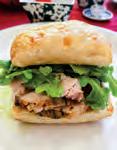






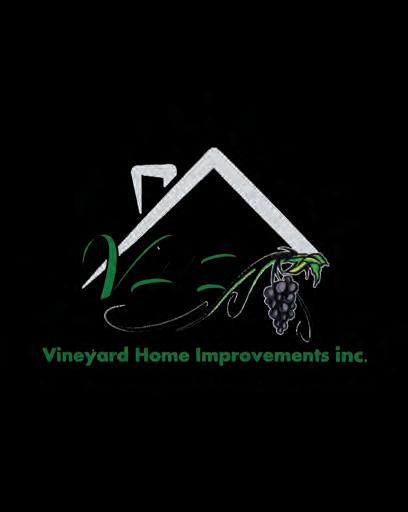


Founded by Gustavo M. Lioncio Over 20 years of experience
Webster’s Dictionary defines “cooperation” as: “operating together to one end; joint operation; concurrent effort or labor.’’ This accurately describes VINEYARD HOME IMPROVEMENTS’ culture and approach to every project. Our staff recognize the importance of partnership, and the ability to work as a team, as well as the necessity of being fair and flexible.

• Experienced in all phases of residential and commercial building construction.
• Skilled Craftsmen
• Design & Value Engineering
• Team Approach
Equipped to handle the more complex multi-story/multi-unit new projects, yet agile enough to execute the smaller jobs with the same degree of professionalism.
All six towns have the same rules for what can and can’t be recycled.
Empty, clean, washed; no caps or lids
• Metal cans
• Plastic containers (bottles, jars, jugs, and tubs)
• Glass containers (bottles and jars; NO cer amics OR window panes)
• Paper and paperboard, corrugated cardboard (empty and flatten, remove packing tape) Includes office paper, junk mail, newspapers, magazines, paperboard boxes;
• NO shredded paper, pizza boxes, waxed boxes, or books with bindings)
• Recyclables in a garbage bag
• Garbage
• Plastic bags or plastic wrap
• Food or liquid
• Styrofo am items or packaging materials
• Clothing or linens
• Tanglers (hoses, wires, chains, electronics)
Aquinnah, Chilmark, Edgartown, West Tisbury
Dual sorting system:
• Cardboard and paper go together
• Plastic containers, tin cans, aluminum cans/glass go together
Oak Bluffs and Tisbury
Dual sorting system:
• Cardboard, newspaper and paper go together
• Everything else single stre am
Oak Bluffs Bruno’s Drop-off
• Dual sorting system:
• Separate cardboard
• Everything else single stream
Note: Harvey (formerly Bruno’s) and ABC’s Pick-up
Recycling Rules
Single bin, don’t need to separate materials
Compost buckets available for free at IGI’s offices in West Tisbury or at town transfer stations. To request a bucket, email office@igimv.org or call 508-687-9062.
Drop-off locations (currently free or for small fee)
• Transfer stations in all towns
• Chappy ferry dock
• IGI’s farm
• Eggshells and coffee grounds to North Tabor and Wise Owl Farms
ACCEPTED ITEMS
• All meat and fish (including bones, lobster shells, and egg shells)
• All dairy
• Grains, nuts, seeds, flour products
• Fruits and vegetables
• Tea bags (staples removed)
• Coffee grounds and coffee filters
• All flowers
• Paper napkins and paper towels (unless they were used with toxic products that won’t break down under high heat)
UNACCEPTABLE ITEMS
• Large amounts of oyster, cl am, littleneck, mussel shells — Contact the M.V. Shellfish Group at mvshellfishgroup.org
• Fat/oil/grease (small amounts from leftover food is fine)
• Plastic or trash of any kind
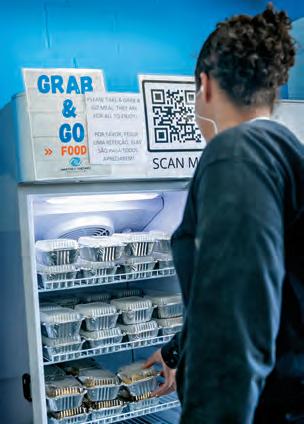
Combat food insecurity and food waste by ensuring that any unwanted non-perishable food is donated rather than tossed. Visit their sites or call for details and hours.
ISLAND FOOD PANTRY
137 Vineyard Avenue, Oak Bluffs igimv.org/about-island-foodpantry; info@islandfoodpantry.org Monday 2:00 pm – 4:00 pm; Wednesday 1:00 pm – 6:00 pm; Saturday 10:00 am – 12:00 pm
Senior Hours: Friday 12:00 pm – 2:00 pm
GOOD SHEPHERD PARISH FOOD PANTRY
55 School Street, Oak Bluffs goodshepherdmv.com/outreach-programs; sarah@goodshepherdmv.com
EDGARTOWN COUNCIL ON AGING FOOD PANTRY
10 Daggett Avenue, Edgartown



Serving the Community of Martha’s Vineyard
Solar System & Battery Installation
Commercial & Residential Canopies & Pergolas


Offset energy costs and reduce the environmental impact of your home by switching to solar. Cape Cod 5 offers solar financing with flexible terms and competitive rates to qualifying homeowners.
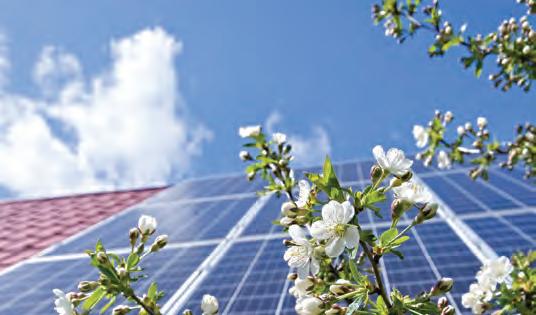

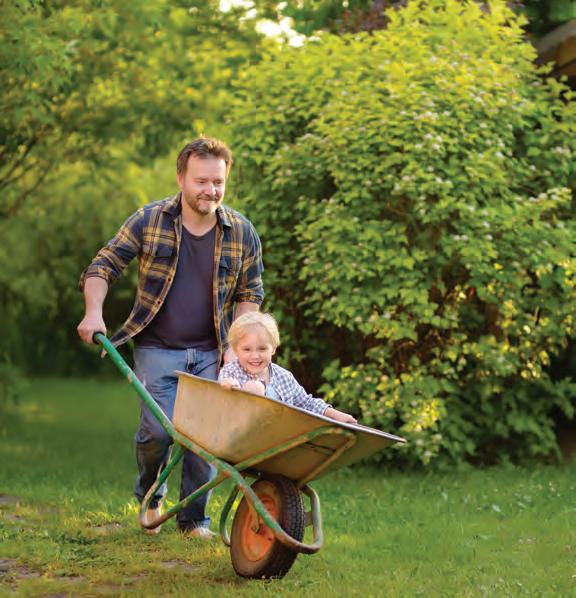

REPRESENTATIVES Got something to say about pending legislation? Call your elected officials.
STATE GOVERNOR Maura Healey 617-725-4005; Instagram/X: @MassGovernor
STATE SENATOR Julian Andre Cyr 617-722-1570; Julian.Cyr@masenate.gov; Instagram/X: @JulianCyr
STATE REPRESENTATIVE Dylan A. Fernandes
617-722-2230; dylan.fernandes@mahouse.gov; Instagram: @dylan1fernandes, X: @RepDylan
FEDERAL SENATORS Ed Markey
Boston Office: 617-565-8519, Springfield Office: 413-785-4601, DC Office: 202-224-2742; Instagram: @EdMarkey, X: @SenMarkey
Elizabeth Warren
Boston Office: 617-565-3170, Springfield Office: 413-788-2690, DC Office: 202-224-4543; Instagram: @ElizabethWarren, X: @SenWarren
FEDERAL REPRESENTATIVE William R. Keating
Cape & Islands Office: 508-771-6868, DC Office: 202-225-3111; Instagram: @RepKeating, X: @USRepKeating Did
DEER, TICK & MOSQUITO CONTROL!
(508)627-2928 | MV@oh-DEER.com oh-DEER.com/locations/MV
ohDEER offers you and your family a proven and safe solution to control ticks and mosquitoes so that you can enjoy your yard. Our products are true all-natural repellents that contain no pesticides or chemicals of any kind. ENJOY MORE TIME OUTSIDE!
• SAFE FOR YOU, YOUR FAMILY & PETS!
• KILLS TICKS & MOSQUITOS ON CONTACT.
• AN EFFECTIVE ‘GREEN’ ALTERNATIVE TO PESTICIDES & CHEMICALS
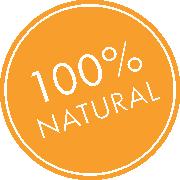






When Spencer Kelly was in grade five, his teacher became exasperated by what she called his “daydreaming.” While the other kids had turned to the appropriate page in their textbooks, Kelly would be staring out the window. When his classmates were turning in their assignments, Kelly was still sketching in the margins. Helicopters, which were a fascination of his. Sharks.
His parents joked they could send him to his room to retrieve his shoes, only to discover him, 45 minutes later, still shoeless but having constructed a Lego Blackhawk. Unlike those around him, Kelly saw no problem with his daydreaming. Neither, increasingly, do some researchers who have coined different
terms for it. Attention Restoration Theory, for instance, uses the term “soft fascination,” and holds that, according to New York Times columnist Lisa Damour, “soft fascination relieves stress by helping us close those mental browser tabs; unhurried reflection lets us sift through mental clutter, quiet internal noise, and come up with fresh, useful solutions.” Soft fascination is the opposite of our productivity-obsessed culture. It isn’t about achievement at all.
Not surprisingly, we often experience soft fascination in nature, where stress is relieved, our ability to focus is restored, and little that our society values is accomplished.
Johann Hari, author of Stolen Focus, discovered soft fascination, which he called mind wandering, when, exhausted from
what he described as fattening himself up on information “like some sort of foie gras goose,” he began walking in nature. “I came back from these long walks feeling so alive and mentally fertile,” he told podcaster Ezra Klein. “And I started building in loads of space for mind-wandering. I started to see connections between things I hadn’t thought about before, I started processing things in my past, I started creating visions for the future.”
It is likely only a matter of time until our culture commodifies soft fascination, giving us goals and strategies to achieve it. But the joke’s on them. All it takes is an aimless walk in the woods or, if that’s impossible, the willingness to do nothing more than stare out a window and let your mind do the wandering.
–Leslie Garrett
Subject:
Southern Pine Beetles““ If they could be on Nantucket, they could be on Martha’s Vineyard, too — no?”
So thought I after I received an email on May 15, 2023, from Emily Goldstein Murphy, Ph.D., research ecologist for the Nantucket Land Bank. Dr. Murphy had written me not because of my role at Sheriff’s Meadow Foundation, but rather because I am a Massachusetts licensed forester. She was seeking help in preparing forest stewardship plans that would help the Land Bank prepare their properties for the eventual arrival of this devastating forest insect.
That morning, I asked my staff to bring any spots of beetle-killed trees to my attention. That afternoon, I returned to my Vineyard Haven office to find a two-foot long section of pitch pine bark on my desk. The smooth, concave surface of the inside of the bark bore a network of sinuous “S”-shaped curves — the tell-tale, serpentine sign of the southern pine beetle. Land Steward Elizabeth “Liz” Loucks had recalled seeing dead trees at the Phillips Preserve, and she had spent part of the day getting a closer look and retrieving a sample of bark.
In each glob, stuck in the sap, was a minute, black beetle – the southern pine beetle. This tree was infested, and the globs of sap, up and down the stem, were the tree’s effort to “pitch” out the beetle.
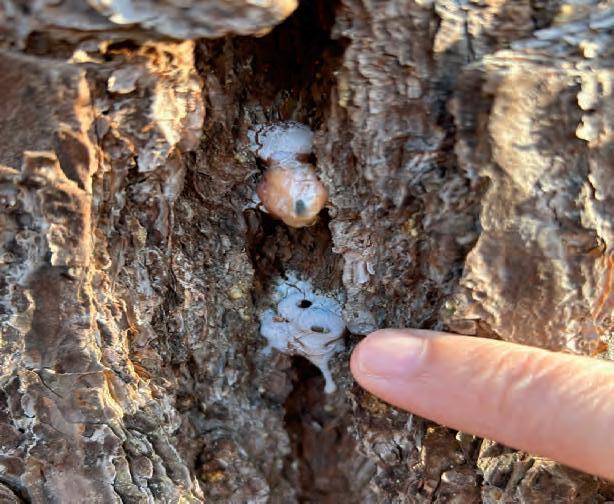
The southern pine beetle, Dendroctonus frontalis, is an insect that is native to the pine forests of the eastern United States. As its common name implies, it has traditionally lived only in the southern states, but the warmer winters of climate change have enabled this beetle to move northward. It was first observed in the woods on Martha’s Vineyard and Nantucket in about 2015, but until now, no outbreak had been observed.
After examining the bark, I left my office and dashed out to the Phillips Preserve. The Phillips Preserve is a 69acre conservation property of Sheriff’s Meadow Foundation in Tisbury. The Preserve stretches from Northern Pines Road to Aunt Rhoda’s Pond, which is a bay on the northwest side of Lake Tashmoo. Army Road and the Road to Chappaquonsett both cross the Phillips Preserve.
I reached the section where Liz had noticed the dead trees and collected the bark. Sure enough, I found several trees that were already dead, and then found a living tree that I suspected to be infected with the southern pine beetle. Now, I had never seen the southern pine beetle before, or what it could do to a pitch pine, but this tree seemed to fit what I had learned. Up and down the stem were globs of orange and white sap. In each glob, stuck in the sap, was a minute, black beetle — the southern pine beetle. This tree was infested, and the globs of sap, up and down the stem, were the tree’s effort to “pitch” out the beetle.
I took several photos. That night, I reported this find to the forest health program at the Massachusetts Department of Conservation and
Trees produce sap to expel the pine beetles.
Recreation, and to the Massachusetts Natural Heritage and Endangered Species Program. DCR visited the Phillips Preserve on July 19, 2023, and confirmed that this was, indeed, an outbreak of the southern pine beetle. A week earlier, DCR had confirmed another outbreak of the southern pine beetle at West Gate Woods, a Nantucket Conservation Foundation property on Nantucket.
My next step was to mark the trees that were infested, and a buffer of trees around them, so that we could try to suppress the outbreak. This is recommended, as left unchecked, the beetles will reproduce exponentially — and kill a corresponding number of pitch pines. By this time we were learning of the power of this incredible insect. I spent one afternoon marking trees, only to return the following day, and notice that, somehow, I had missed a tree here, and another there. After a day or two of this, I realized that I had not missed these trees. Rather, the beetles were simply moving from one tree to another.
As we mapped this area for the Forest Cutting Plan that I filed with DCR, we measured the spread of the beetles. To our dismay, the beetles were moving at about 10 feet per day. What had been a small outbreak in a half-
acre spot had quite rapidly spread to four acres in a very short time. Why were we not cutting the trees and suppressing the outbreak? We were not cutting because — due to the presence of maternity roosts for the endangered northern long-eared bat, there is a prohibition against cutting any trees between June 1 and July 31.
Once the cutting prohibition passed, we began our suppression work. We hired Conor Hynes, a licensed timber harvester and the owner of Cape Cod Firewood. Conor went to work with a feller-buncher and grapple skidder — two pieces of forestry equipment that enable safe and efficient logging. In spite of our efforts, our suppression efforts could not contain the spread of the beetle. The beetles were moving from other infestations on neighboring properties. It was only the colder temperatures of the fall and winter that

ultimately slowed them down.
During the winter we set up a portable sawmill at the Phillips Preserve. The larger sawlogs produced beautiful pitch pine lumber. This lumber is being used on the porch for

Shivelight 'shīv 'līt
Perhaps it’s been raining, and the forest smells fresh and scrubbed clean. The sun is now high in the sky, and as you venture deeper into the trees and the foliage above you thickens, you notice that the sun’s shafts slip through the canopy like glittering swords. You can picture it, can’t you? It feels holy. It’s … what would we call it, exactly? It’s “shivelight,” some stranger on Twitter posits and
the new Sheriff’s Meadow office in West Tisbury, and it is used to make desks and counters for the office, too. We are now at work suppressing additional outbreaks at the Phillips Preserve, and thinning the forest so that the best, mature pitch pines might have a chance at surviving the outbreak. Thinning helps by increasing the flow of air around the crowns of the pitch pines. Beetles communicate by pheromone, and scientific research shows that thinning interrupts their communication, and offers a chance for the trees left standing. Forest stewardship plans and additional thinning operations and suppression cuttings are in progress for several other pitch pine forests owned by Sheriff’s Meadow Foundation.
For more information about any of Sheriff’s Meadow Foundation’s work, visit sheriffsmeadow.org
Google confirms — a word conceived by poet Gerard Manley Hopkins in 1888 to describe those lances of light that pierce a tree’s canopy or foliage. Another poet, Dylan Thomas, referred to this phenomenon as “windfall light.” Writer C.S. Lewis coined the term “Godlight,” writing: “Any patch of sunlight in a wood will show you something about the sun which you could never get from reading books on astronomy. These pure and spontaneous pleasures are ‘patches of Godlight’ in the woods of our experience.”
The Japanese call it Komorebi, a word that sounds like poetry too.
I’m with Lewis. Nature delivers information to us that we won’t find in science books, and poets help us put words to what we’re seeing. So let’s give Hopkins the final words, from his poem:
Down roughcast, down dazzling whitewash, wherever an elm arches, Shivelights and shadowtackle ín long lashes lace, lance, and pair.
–Leslie Garrett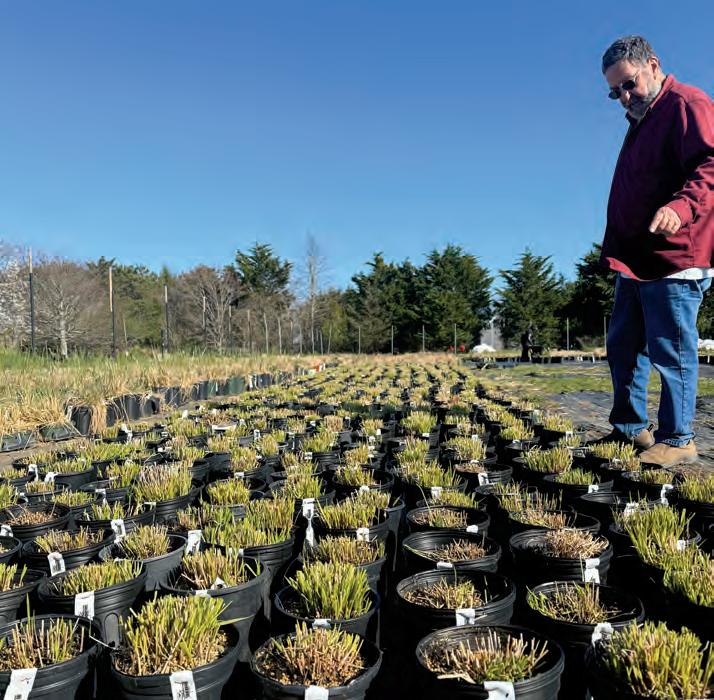
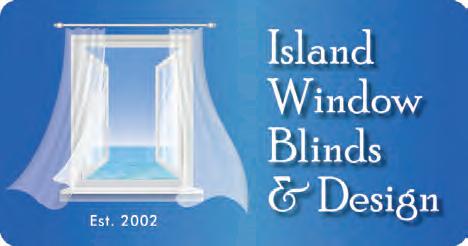

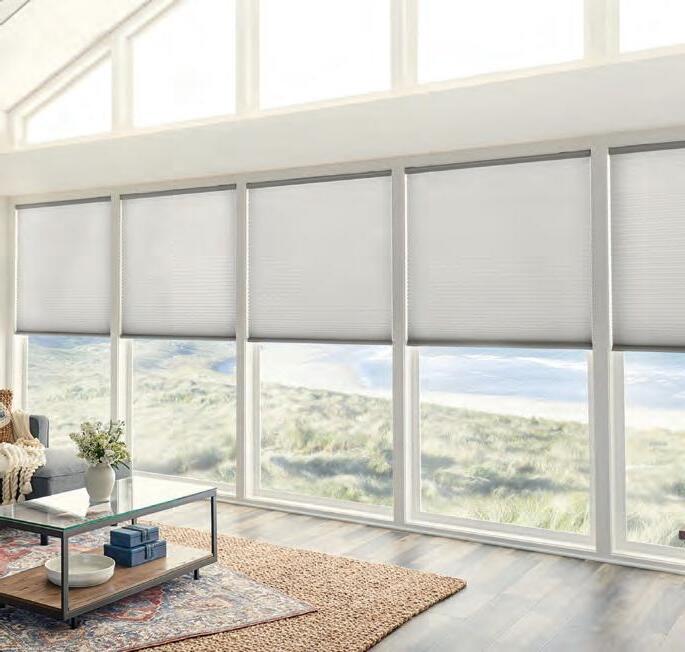
Each fall, the crew at Donaroma’s collects bluestem grass seeds from meadows across the Island, with permission from and in partnership with the MV Land Bank and other conservation organizations. They are planted and overwintered across Donaroma's farms and these grass seeds grow into native grass that is then used to create meadows when needed across the Island.
Donaroma's also has hundreds of pots on their farms that are filled with soil and allowed to grow whatever the wind, birds, and rain bring into said pots. Yes, you understood that correctly! Basically, Donaroma's fills pots with soil and for weeks and months, allows Mother Nature to plant whatever she wants in these pots. A team effort between birds, wind, and rain, the results are pots that grow filled with native grasses,
and
invites you to explore a curated selection of eco-friendly, non-toxic, and energy-efficient window treatments.
As a local design resource, we work with homeowners and interior designers on new builds, renovations, and interior refreshes offering blinds, fabrics, wood shutters, and more for your Island home.
Our Mobile Design Van “brings the store to your door” so that you can quickly and confidently make decisions. We will consult, measure, and install — contact us today!
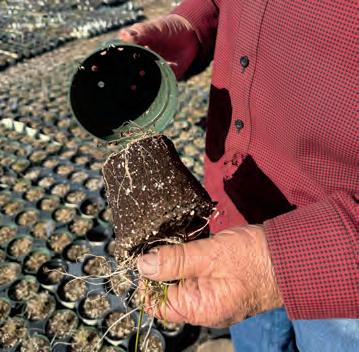
Donaroma's collects seeds from bluestem grass from meadows across the Island. Donaroma's collects seeds from bluestem grass from meadows across the Island.

flowers, shrubs, and other Island plants. So when someone would like to replenish an Island meadow needs to be replenished with native plants, the native plants are immediately available. Hard to get more local and sustainable than that.
–ShoredUpDigital

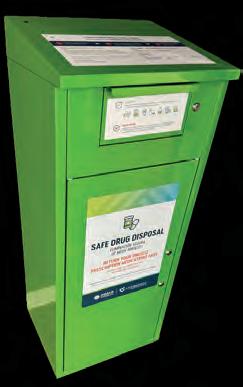


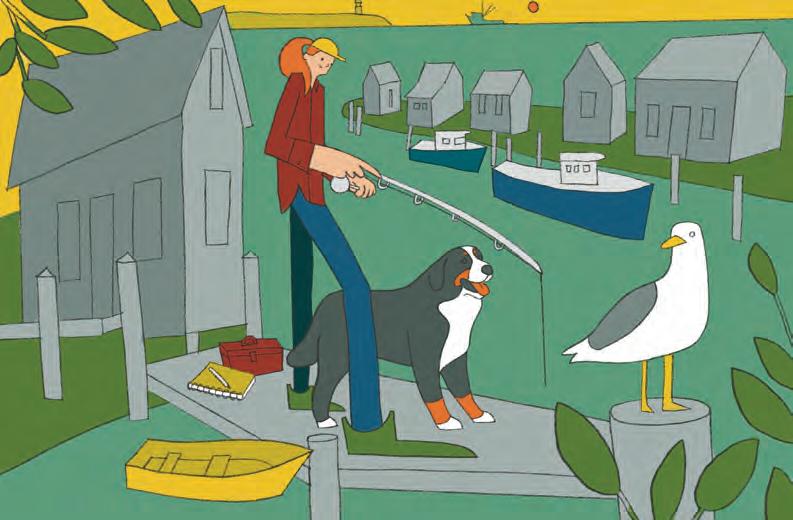
Dear Dot: Is there something I can put on my lawn that doesn’t harm wildlife, including my pets or grandchildren, but that deters ticks?
Dear Rose,
I know I’m supposed to love all bugs because they play a part in the ecosystem and blah blah blah but c’mon … Ticks? Ugh. While most of us go out of our way to avoid ticks, Island biologist Dick Johnson seeks them out. Johnson is the tick guy on the Island, spending his days hunting these tiny terrorists to better understand where they are and what they’re doing. The Lone Star nymphs (such a glorious name for such a nasty creature) are already out by early April. The deer tick nymphs emerge a bit later — mid to late May, says Johnson — and are dangerous because they’re so tiny at that stage. Be vigilant. If you, your kids and grandkids, or pets have been outside, follow up with a tick-check. Because the deer tick
nymphs are the size of poppy seeds, and like to nestle into our bodies’ warm humid crevices (armpits or groin, for example), Johnson recommends that we feel for them when we shower. If there’s a tiny bump that wasn’t there yesterday, it’s likely a tick nymph.
A tick “bite” is something of a misnomer, says Johnson. What ticks actually do sounds like something from a horror movie. With their barbed “hands,” ticks essentially breaststroke into your skin, then jam in a mouth part called a hypostome — Johnson says it acts like a straw. Except that this straw also has hooks akin to a miniscule chainsaw. Compounds in the ticks’ saliva make our blood pool beneath the skin and the tick begins to sip, a delicate feast that can last three to ten days. “If [ticks] were the size of a cow, they’d be really scary,” Johnson tells me, ensuring that I will begin to have nightmares of cow-sized ticks.
What can we do to prevent these bloodthirsty, chainsaw-wielding non-cow-sizedbut-still-horrible ticks?
The first step is in your yard, Johnson says. If you’re in a tick-prone area, get rid of leaf litter and pine needles that offers the damp shady conditions that ticks love. I’m reminded, however, that eco-gardening experts urge us to leave that stuff for precisely the reason that it’s ideal habitat for so many of the other insects we love.
At minimum, if your yard abuts a wooded area, create a three-foot wide strip of gravel or large wood chips to act as a barrier to ticks. This can also serve as a visual reminder to you that beyond is tick territory. Ticks aren’t typically on lawns (more
on that later) but they will seek out certain plants. Rhododendron is a popular tick hangout, as are the invasive plants, Russian olive and bittersweet, giving us yet another reason to banish those from our yards.
Unfortunately, keeping Lone Star ticks at bay isn’t so simple. Johnson calls them the “cheetahs” of the tick world because they move so fast. “For years, we’ve been telling people they don’t need to worry [about ticks] on their lawns,” says Johnson, but Lone Star ticks react to carbon dioxide. So if you’re breathing or sweating on your lawn, he says, “they will come after you, across the lawn from the woods, and seek you out and bite you.” Yes, that’s right: Lone Star ticks will seek you out and hunt you down like microassassins. If you have a major tick problem, or if Lone Stars have moved into your territory, there are a few options available to you to reduce their numbers.
Keep your grass short, no taller than 3 to 3 ½ inches.
Encourage birds in your yard. Groundfeeders like sparrows, that pick about in leaf litter, feast on ticks.
Johnson is leery about the impact of larger birds, such as turkeys and quail, which he says some people are employing to tackle ticks: “That's making me very nervous because Lone Star ticks in particular feed on birds so they may be eating some of the ticks but at the same time, you're feeding a whole bunch of ticks.” A dead turkey that Johnson recently examined had five Lone Star ticks attached to it.
“Most ticks die from not getting a meat blood meal,” he explains. “Between the different stages as they hatch, they have to get a blood meal to become a nymph, which I call the teenagers. Teenagers have to get a meal before they become an adult so they have to feed twice and most ticks don't make it — they either get eaten or just don't ever get the blood meal they need to live. When you put out a quail or something like that, you may just be keeping more ticks alive. So the question is how many ticks does the quail eat versus how many ticks feed on it and increase the population?”
For really difficult tick problems, Johnson says, you might want to pull out the big gun, a chemical called permethrin. “It’s actually a type of plant, a relative of the
chrysanthemum,” he said, though in North America it’s been reconfigured as a synthetic pesticide. Johnson says it’s considered safe for children and dogs (permethrin is highly toxic to cats), though Consumer Reports noted that permethrin is an endocrine disruptor so use should be careful and judicious and a last resort. Another problem is that permethrin is indiscriminate — killing our beloved pollinators as effectively as it does the dastardly ticks.
Still, it’s hard to argue with its effectiveness. A 2020 study published in the Journal of Medical Entomology determined that clothing treated with permethrin was 58% more effective at protecting the wearer than non-treated clothing. You can purchase permethrin-treated clothing from manufacturers (including L.L.Bean) or purchase a permethrin spray and apply it to your clothes, being careful to follow instructions.
If you do find a tick has chosen you as its next blood meal, remove it by using tweezers as close to the skin as possible and pulling straight up. It takes 24 to 48
hours for a deer tick to begin transmitting Lyme disease so sooner is better than later to check your body for ticks. If you are bitten, get doxycycline as a prophylactic, Johnson says. “There's a good study in The New England Journal of Medicine that showed an 85% reduction in incidence of Lyme disease with people who were treated within the first couple of days with a dose of doxycycline,” he says.
Of course, it isn’t just Lyme disease that’s of concern. Though less prevalent, ticks can also carry babesiosis and ehrlichiosis. Lone Stars can carry tularemia and anaplasmosis, two illnesses that can lead to death.
Johnson is optimistic that a new vaccine against Lyme disease (already available to our dogs) will be available in three to five years.
In the meantime, let’s review our options: a gravel or mulch barrier, removal of plants where ticks like to congregate, encouraging ground-feeding
birds such as sparrows and discouraging larger birds like turkeys and quail, and donning permethrin-treated clothing when spending time in tick territory. But let’s not overlook some simple steps: When you’re gardening or hiking, wear long pants, socks, and a long-sleeved shirt at minimum. Do a daily tick check of yourself and others for ticks, including their favorite bodily hideouts. Johnson himself is well covered in permethrin-treated clothing that he sends to Insect Shield, a company that will treat your clothes and return them to you (clothes remain treated through roughly 60 launderings) and even though he’s logged many hours in tick habitat intentionally handling thousands of ticks, “we don’t get bitten,” he says. May we all be so lucky. Avoidantly, Dot
Dear Dot,
I would like to put solar panels on my home. Can you recommend reputable solar companies servicing the Island?
Dear Lisa,

—Lisa Maxfield, Oak Bluffs
Fifteen years ago, Mr. Dot and I were forced to rebuild our roof when it became clear — thanks to water plip plopping bedroom floor — that our roof was leaky. Trying to see the bright side, we decided it offered the perfect opportunity to install solar panels. But — again this was 15 years ago — more than four solar installers told us that there was no point: Our house didn’t have a south-facing roof, and we had too many trees. ( thing as too many trees! I scoffed.)
Lucky for us, times hav
Dot has lots more to say (bit.ly/DEAR-DOT) about the usefulness of expiration dates on food, the veracity of the claim that Martha’s Vineyard runs on 100% renewable energy, whether to trust ecocertifications, if you should toss your batteries for rechargeables, and the methane emissions of conventional vs grass-fed cattle.
Please send your questions to deardot@bluedotliving.com

Dear Dot,
The cost of my utilities is steadily going up. What can I do to reduce what it’s costing?
– NinaDear Nina,
You have come to the right Dot. It has long been my insistence that living lighter on the planet shouldn’t be a matter of spending more money (hybrids! Solar panels! Organic cotton!) but rather less. That’s not to say that electric vehicles and solar panels and clothing made from natural fibers aren’t all positive things — they are! It’s rather to say that they are not the only way to address climate change. A far better solution is to look at where we can cut back (see Laura Roosevelt’s story about her pinchpenny mom: bit.ly/Pinchpenny). As Dot has been known to say, if you want to talk to an environmentalist, find someone who lived through the Great Depression. Which brings us to your question:
Just as we can get our vehicles to consume less fuel simply by leaving them in the driveway (and instead walking/biking/ rollerblading/busing/carpooling/the list goes on), we can consume less energy in our homes by taking some very simple steps:

TURN UP THE TEMP: If, like ninety percent of the homes in the U.S., yours has air conditioning, bump your thermostat up a few degrees to 78 degrees (bump it up another 4 degrees to 82 degrees when you’re sleeping and 85 degrees when you’re away from home). We have become acclimatized to houses that feel like deep freezers, but ideally there shouldn’t be a big difference between outside and inside temps — just enough to keep you comfortable.
(A caveat, however: If you have heat pumps — and hurray for you if you do, Nina! — you can turn the thermostat up when it’s in AC mode without issue. But you cannot do the opposite and turn it down when it’s in heating mode. Instead, when it’s heating, maintaining a moderate setting is the most costeffective practice. Specially designed programmable thermostats for heat pumps are increasingly available, and they make setting back the thermostat cost-effective. Otherwise, set a moderate temperature in the winter and leave the device alone for the most energy-efficient use.)
COLD WATER FOR THE WIN: Wash your clothes in cold water and let the sun dry them (or use an indoor drying rack). Longtime readers know that Dot loves her clothesline — all the convenience of a dryer without the energy consumption, plus the added benefit of clothes that smell like a fresh summer day. You won’t find that smell in a bottle, Nina, no matter what the ads tell you.

Dot has already exposed this phantom for the energy thief it is; read it here: bit.ly/ Phantom-pwr.
SEE THE LIGHT: Dot hopes there are no CFL light bulbs (or — gasp — incandescents) in your house but if there are, switch thee to LEDs immediately
THINK SMALL: Use energy sipping appliances over the energy hogs: consider greater use of your slow cooker, your air fryer, your toaster oven. Added bonus: None of them get warm enough to heat up your kitchen, making them perfect summer appliances, if you must cook at all!
TRY WATTBUY: WattBuy’s (WattBuy. com) goal is to help you save money on your utility bills by making you aware of alternatives to the default power provider and letting you know if there’s a clean energy provider you can opt into instead.
EXPLORE THE IRA: Consider what’s available to you via the Inflation Reduction Act’s rebates and incentives. Rewiringamerica.org can point you in the right direction.
Check out Vineyard Power’s Energy Coaching Programs: (vineyardpower. com/energy-coach)
Take a look at Cape Light Compact’s Home Energy Audit programs: capelightcompact.org/ energy-efficiency-for-your-home/
– Frugally, Dot
From: The MV Atlas of Life
Subject: How to Identify Martha’s Vineyard Butterflies
With 82 species of butterflies known from Martha’s Vineyard, learning to recognize these colorful insects may seem like a daunting task. But if you set aside extirpated species, rare vagrants, and butterflies with specialized habitat requirements, the task looks a lot easier! The vast majority of butterflies that a beginning observer encounters will likely be members of a small number of common, adaptable species. Here are 12 of our most widespread butterflies, ones that commonly visit yards and gardens. Learn to recognize these and you’ll have a strong basis for learning the rest of the Island’s butterflies.
– Matt Pelikan

A very common, medium-sized butterfly. Its larvae feed on a wide range of asters. The size and lace-like black markings on the wings are distinctive among our butterflies. There are generally three generations each year, flying between mid-May and mid-October; this species may be rare or absent between those population peaks.

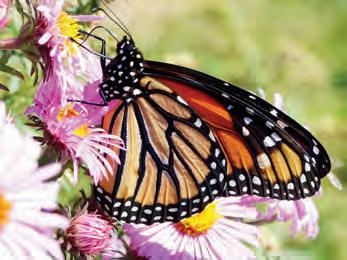
An iconic insect, known by nearly everyone. The Monarch’s migratory lifestyle and association with milkweeds as its larval host plant are also well known. Monarchs typically arrive on the Vineyard in May, reach their peak of abundance during their southbound migration in September, and may persist into early December. The large size, black wing veins, and white-spotted black wing borders are distinctive.
Learn to recognize these and you’ll have a strong basis for learning the rest of the Island’s butterflies.
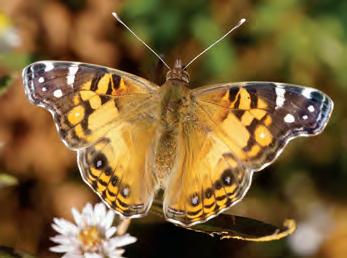
Like the Monarch, a migratory species that probably does not survive the winter on the Vineyard but recolonizes the Island every year. Numbers vary widely from year to year, and the species is typically present from mid-April into late November. The American Lady closely resembles its less common relative, the Painted Lady.
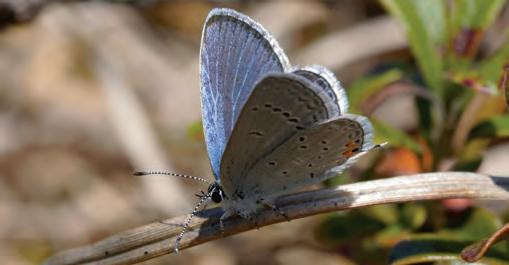

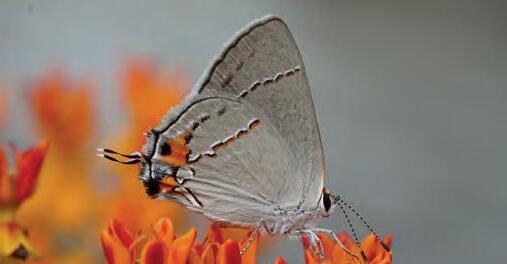
This tiny insect, about the size of a fingernail, can be recognized by the tiny tails (sometimes absent due to wear) and orange spot at the margin of the hindwing. Males are blue above; females are gray. This is another butterfly with larvae that feed on pea family plants. Hardy despite its small size, several generations of this species produce peaks of abundance in early spring, mid-summer, and late summer/early autumn.
This small butterfly, about the size of a penny when its wings are folded, is common and widespread on the Vineyard and has an extraordinarily long flight season: three or even four generations, from mid-April into early November. The black-spotted orange forewing and gray hindwing with an orange border are good ID cues.
A common and adaptable butterfly; its larvae use pea family plants including native bush clovers. Several generations occur each year, from mid-April into late October. Like all its hairstreak relatives, Gray Hairstreaks typically perch with their wings closed over their backs. The undersides of the wings of all our hairstreaks have distinctive patterns of stripes or spot bands.
A small butterfly, well under an inch in length, this is the most common and widespread of the Vineyard’s 18 “grass skipper” species (so named because they use grasses as their larval host plants). Note the two large yellow patches on the underside of the hindwing (our other skippers also have distinctive markings on their undersides, as well as more subtle but still useful differences when seen from above). Peck’s Skipper exhibits three generations between mid-May and early October on the Vineyard.
One of several related species of southern United States that have been expanding resolutely northward, the Zabulon Skipper has only been established on the Vineyard for about 10 years. But it is highly adaptable and at home in yards and gardens and has grown rapidly in numbers. Males have a nearly unmarked, golden disk on the undersides of their hindwings; females, seen less frequently, are much browner and look quite different.
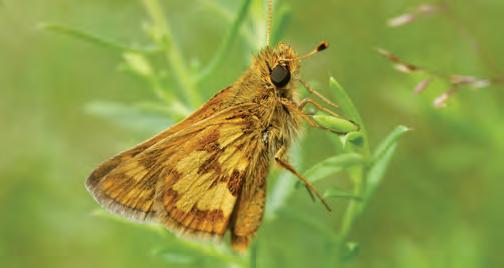

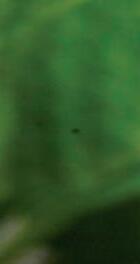
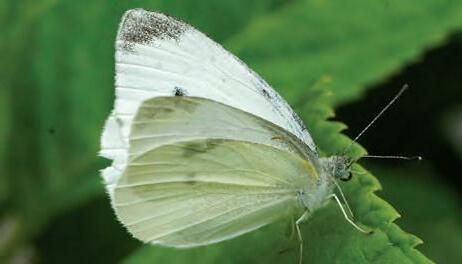

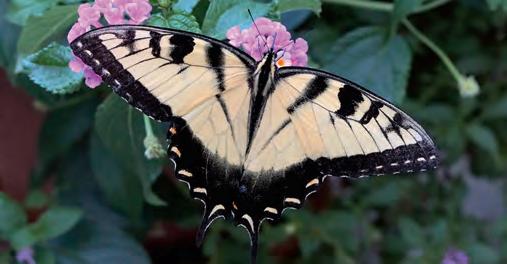

One of just two non-native butterflies found on the Vineyard, this medium-sized white species is common around yards, gardens, and farms. Its caterpillars eat members of the cabbage family, giving this butterfly its common name. A hardy species, Cabbage White adults are usually on the wing by late March, and the species can be found here into early November.
Rare on the Vineyard until the 1940s, this butterfly is very similar to the closely related Clouded Sulphur, which lacks orange coloring on the forewing. Both species are common in yards and agricultural habitat on the Vineyard; their larvae feed on pea family plants including alfalfa and vetch. Both sulphurs fly into early winter; there are even January records for Orange Sulphur! White-morph female sulphurs can be confused with Cabbage White, but note the “bull’s-eye” marking in the center of a sulphur’s hindwing.
Unmistakable! The size of your hand, bright yellow and boldly striped with black, this butterfly breeds in woodlands but ranges across the entire Island. Two or three generations mature each season, and this spectacular insect can be found in varying numbers from late April into late September.
Black with prominent yellow spot bands crossing its wings, the butterfly frequently lays its eggs in gardens on dill or fennel plants. Its near look-alike, the Spicebush Swallowtail, is much more restricted to natural habitats than the Black Swallowtail is. Members of several generation be found from early May into mid-October in a typical year.
Go to mval.biodiversityworksmv.org/species-lists/butterflies for an annotated checklist, links to recent observations and ID guides, and a list of useful resources.
To : Bluedot Living
From: Polly Hill Arboretum
Subject: MV Wildtype: Native Pollinators Grown from Local Island Seeds
Martha’s Vineyard hosts significant habitat that supports biodiversity. But our natural habitats are fragmented by development. Restoring habitat connections across the Island is critical for protecting its biodiversity. Your backyard can act as a stepping stone to help support wildlife. Here are some native plants you could plant in your Island yard.
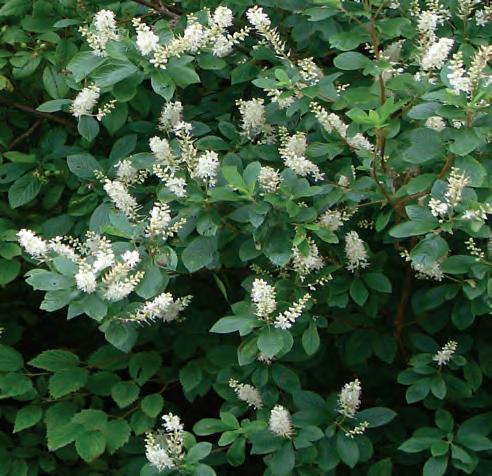
Clethra alnifolia
Zone: 3 to 9
Type: Deciduous Shrub
Zone: 3 to 9
Height: 3 to 8 feet
Spread: 4 to 6 feet
Bloom Time: July to August
Bloom Description: White
Sun: Full sun to part shade
Maintenance: Low
Flower: Showy, fragrant
Tolerates: Heavy shade, erosion, clay soil, wet soil
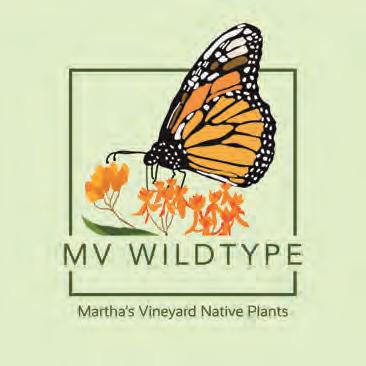
Rhododendron viscosum
Zone: 4 to 9
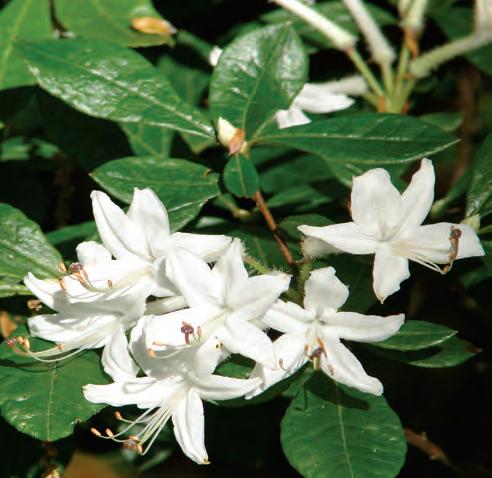
Type: Deciduous Shrub
Zone: 4 to 9
Height: 3 to 5 feet
Spread: 3 to 5 feet
Bloom Time: May to July
Bloom Description: White to pale pink
Sun: Part shade
Maintenance: Medium
Suggested Use: Hedge
Flower: Showy, fragrant, good cut
Tolerates: Rabbit, wet soil
COMMON NAME
American Hazelnut
Corylus americana
Zone: 4 to 9
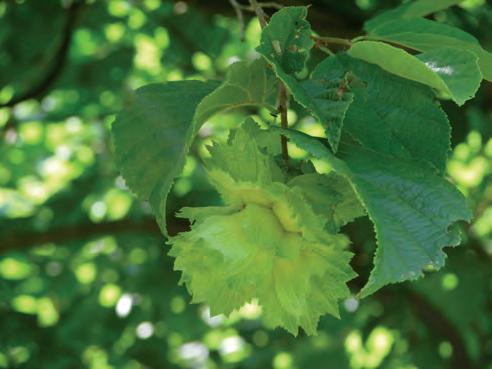
Type: Deciduous Shrub
Zone: 4 to 9
Height: 10 to 16 feet
Spread: 8 to 13 feet
Bloom Time: March to April
Bloom Description: Male plants are brown, and female plants are red
Sun: Full sun to part shade
Maintenance: Low
Suggested Use: Hedge
Flower: Showy
Tolerates: Clay soil, black walnut
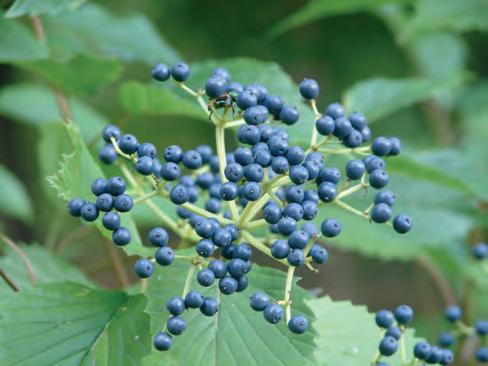
Zone: 4 to 8
Type: Perennial
Zone: 4 to 8
Height: 1 to 2 feet
Bloom Time: August to October
Bloom Description: Purple, blue
Sun: Sun, part sun, and part shade
Maintenance: Low
Suggested Use: Rock garden plant, deer resistance, drought tolerant, cut flowers
Tolerate: Average soil, loam, sand, gravel/rock
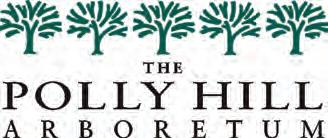
Polly Hill Arboretum 809 State Rd, West Tisbury, MA 02575 (508) 693-9426 · www.pollyhillarboretum.org
Polly Hill’s Visitor Center and Plant Sales open for the season on Saturday, May 25. Check out their online plantfinder guide at plantfinder.pollyhillarboretum.org/
Excess nitrogen in the water feeds algae blooms harmful to wildlife, people, and pets. In 2022, the Great Pond Foundation and the Marine Biological Laboratory sampled the Edgartown and Tisbury Great Ponds, and Chilmark and Crackatuxet Ponds and found that approximately 51 to 58% of the nitrogen comes from wastewater, 21 to 27% from fertilizers, and 17 to 21% from atmospheric sources, with birds typically contributing a miniscule 1% or less. (For details, visit the Great Pond Foundation website.)
What we do on the land affects the nearby water. With the Vineyard’s sandy soils, chemicals and fertilizers leach into our groundwater that flows into our ponds and wells.
1 2
Embrace a lawn that is a mosaic of more drought tolerant grasses, mosses, and native plants, and is safe for your family. Cut it to a height of three inches and leave the clippings on the lawn for a natural fertilizer. Don’t use lawn chemicals or synthetic fertilizers; much of this leaches through our sandy soils and ends up in the groundwater. Fertilize lightly with compost in the fall. For Vineyard lawn tips, visit the Vineyard Conservation Society website.
into a sweeping meadow. The base of the grassland meadow could be little bluestem grass, butterfly weed, Asters, and other native flowers. Mow winding paths to the water, your garden shed, or pool. To maintain the meadow, mow high once in the winter/early spring (to protect ground nesting birds), leaving the clippings on the ground to reseed.
and structure over the four seasons. Ninety percent of the world’s sandplains grasslands are on the Cape and the Islands — let your yard add to this incredible landscape. You will be rewarded with a world of butterflies, fireflies, songbirds, buzzing bees, and more.
5
Have a native plant expert from BiodiversityWork’s Natural Neighbors program visit your yard to give you tips on what to plant, how to support wildlife, and native plant kits to buy. Polly Hill Arboretum sells Island native plants, as do some nurseries. Learn about native sandplain grasslands through a Nature Conservancy webinar. Use landscapers who are familiar with environmentally friendly practices or share these resources with your current landscaper. Support nonprofits that work to keep our ponds healthy.
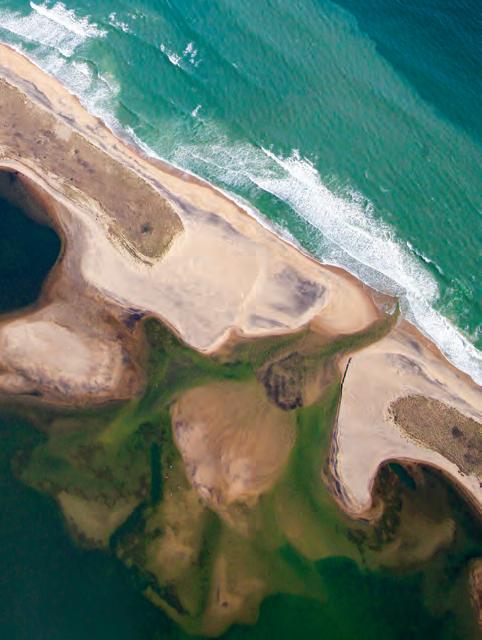
3
Between the water’s edge and your lawn, leave a large natural vegetative area of 10 to 100+ feet. The root systems will bind the soil preventing erosion, soak up nitrogen, and help filter out other contaminants.
4
Try having a small mowed area around the house and maybe an area to play in, but let the rest grow
Native Vineyard plants need little, if any, watering. They also offer an attractive changing color palette
6
Land is the best buffer to absorb excess nutrients and chemicals that could flow into the ponds. Intact native landscapes can filter and prevent 75% or more of the nitrogen from entering our ponds. Affordable housing is a critical need on the Island and it can go hand-inhand with land preservation efforts, smart growth, and ecological integrity. Support non-profits that are protecting the unique natural habitats on our Island.
–Anne Mazar
Anne Mazar is a board member of the Great Pond Foundation and lives alongside the Edgartown Great Pond. See the story of her house, and the restoration of the native sandplain here: bit.ly/Great-Pond-House.
1. Percent of the world’s bird species that are songbirds: ~50
2. Percent of songbird species in which the females sing: 66

The slow overture of rain, each drop breaking without breaking into the next, describes the unrelenting, syncopated mind. Not unlike the hummingbirds imagining their wings to be their heart, and swallows believing the horizon to be a line they lift and drop.
–Excerpt from ‘Mind’ from The Dream of The Unified Field by Martha’s Vineyard poet Jorie Graham
3. Percent decrease in volume of Sparrows’ song during the early pandemic when noise pollution was down: 35
4. Number of acorns that Acorn woodpeckers store individually in holes in trees, fence posts, utility poles, and buildings: up to 50,000
5. Percent of North American bird species that feed insects to their young: 96
6. Number of species of butterflies/moths supported in North America by native oaks: ~550
7. Number of caterpillars a clutch of Carolina Chickadee chicks eat in the 16 days between hatching and fledging: 9,000
8. Number of songs Sparrows sing: ~10
9. Number of songs Brown Thrashers sing: ~2,000
10. Distance north that seven North American Warbler species have shifted in past quarter century: 65 miles
11. Distance south that 35 North American Warblers have shifted: 0 Miles
12. Number of bird species that have gone extinct in past five centuries: 150
13. Number of bird species protected from extinction by stabilizing carbon emissions and holding warming to 1.5 degrees C: 150
14. Percent increase in sightings of Wood Thrushes, Eastern Towhees, Veeries, and Scarlet Tanagers (all species of conservation concern) in yards with native plantings as compared with yards landscaped with typical alien ornamentals: 800
1/2: The Cornell Lab of Ornithology; 3: Eos; 4: Allaboutbirds.org; 5/6/7: Audubon; 8/9: The New York Times; 10/11: Nature Canada; 12: Our World in Data; 13: Audubon; 14. Allaboutbirds.org.
To : Bluedot Living
From: The Staff at Mass Audubon/Felix Neck
Subject: Here are a few of our favorite trails
Jessa Elsasser,
Felix Neck Property Manager
My favorite trail at Felix Neck is the Marsh Trail. It takes you through several different terrains, making it feel like quite the adventure! It starts off woodsy, then goes to Marsh-y, then beach-y, then everything all over again! Ending (or beginning, depending on your direction!) with a beautiful boardwalk stroll down to the duck blind overlooking the pond, where you can take a rest on the bench and get a secret peek at the swans and any other birds that might be around.
Josey Kirkland,
Islands Education Manager
There are great views of the salt marsh and Senge from the Marsh Trail. A bird blind looks over waterfowl pond for peaceful observations and meditation … it even takes you through a pine forest so when the season is right you can look for warblers.
Sydney Pigott,
Felix Neck Education Coordinator
I love taking students out to the salt marsh monitoring station and discussing the data that's collected, view Sarson's island, and grab some sea pickles.
Anne Ouwerkerk, ern and Feather Preschool Director
I love walking by the pond, through the woods, over a stream, by the marsh, and being able to see Sengekontacket and the ocean at the end. You can see it all!
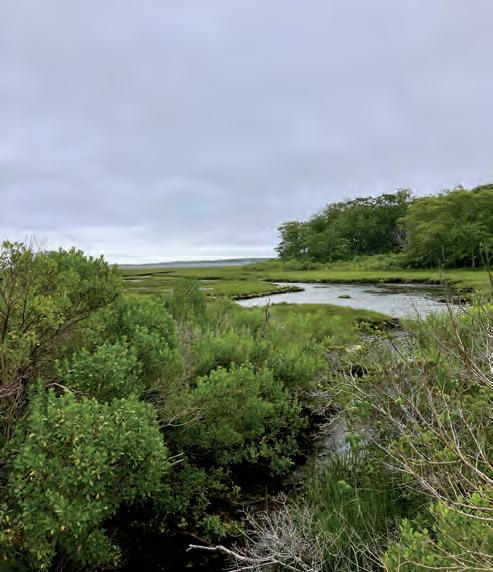
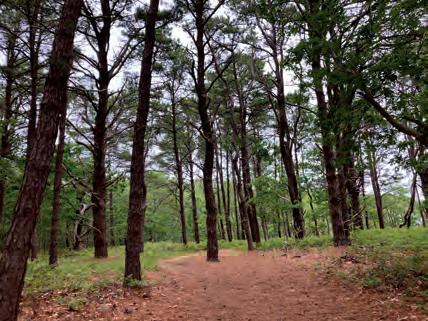
Suzan Bellincampi, Islands Director
Here you might just find the best Island view around. The sky and water come together, extending beyond Sengekontacket Pond, over an island filled with birds out to Nantucket Sound. Takes my breath away every time.
Liz Cosgrove, Office Manager
Throughout the year I love to wander down the Sassafras Trail to the inside shoreline of Sengekontacket. The picturesque footbridge over turtle pond is a wonderful place to take photos of the swans and ducks that paddle past. Once at the beach there are plenty of little sea creatures such as hermit crabs, fiddler crabs and minnows to watch as they go about their daily routine. Overhead during the season, you may spot an osprey with a fish in its claws, or a cormorant diving for its next meal. I find walking the trail in the early morning a great way to find peace and start the day fresh.
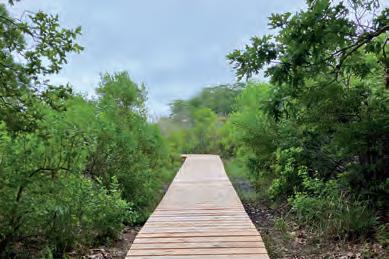
Oliver Osnoss, Islands Property Manager
The changes in vegetation and habitat. Views out to the pond, and the hidden amphitheater. As a new staff member, I only recently discovered this trail and still have not yet walked all the trails but this one surprised me and stuck out for sure.
Liz Dengenis, Islands Operations Manager
After getting a glimpse of some sunning painted turtles on the pond I love to turn onto the Shad trail and notice the ground beneath my feet slowly becoming more sandy as I search for blueberries and huckleberries starting to ripen (but leave for the birds). Emerging into Major’s Cove in Senge greeted by some sea pickles and maybe a green heron never gets old as I reach the end of the Shad Trail and stroll along the shoreline.
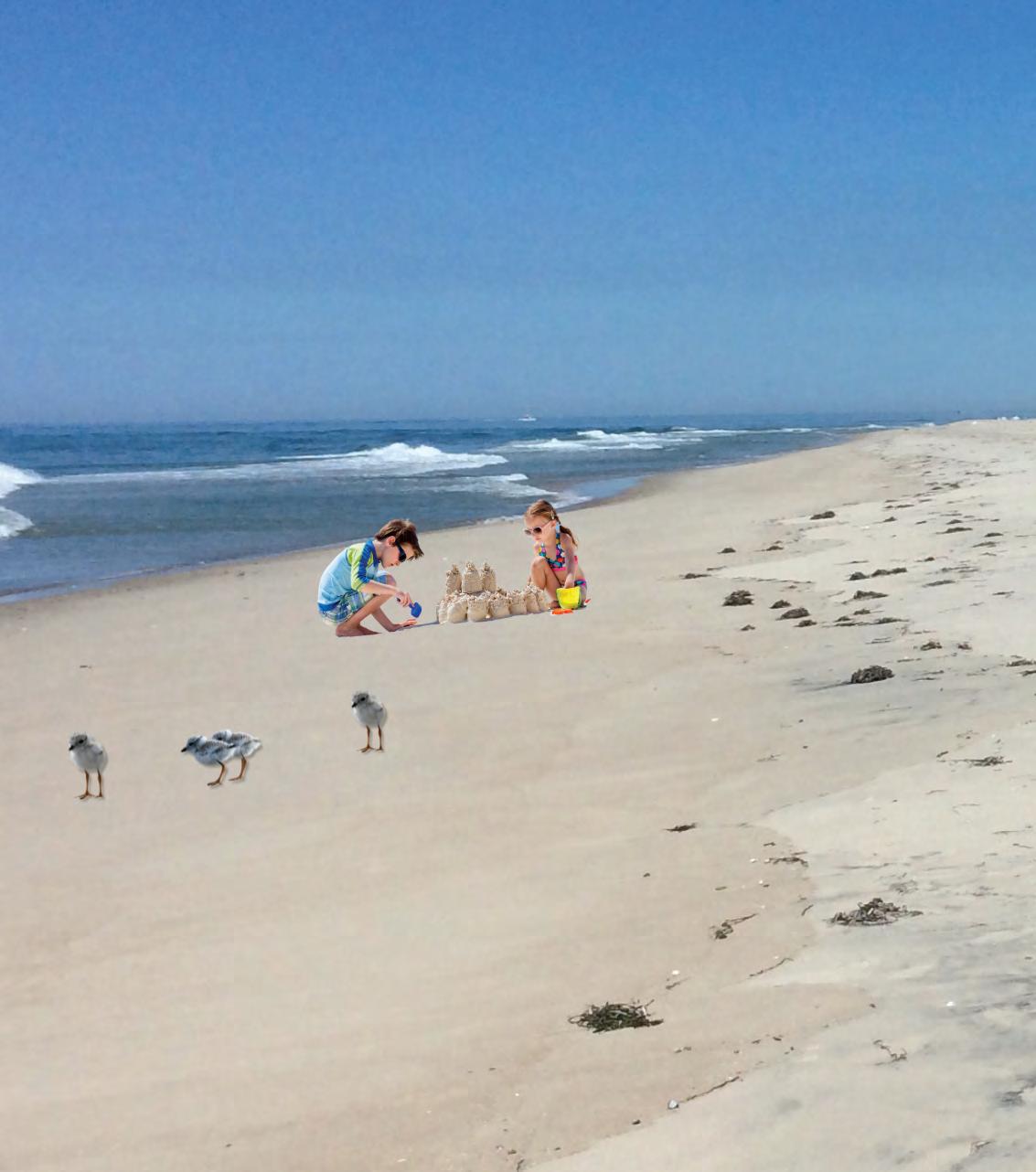
Sustainability also includes doing the right thing to help the many species who share this planet with us. Beaches are home to many fragile species. BlueDot encourages our readers to look for signs at the beach and follow the guidelines for sharing the shore.
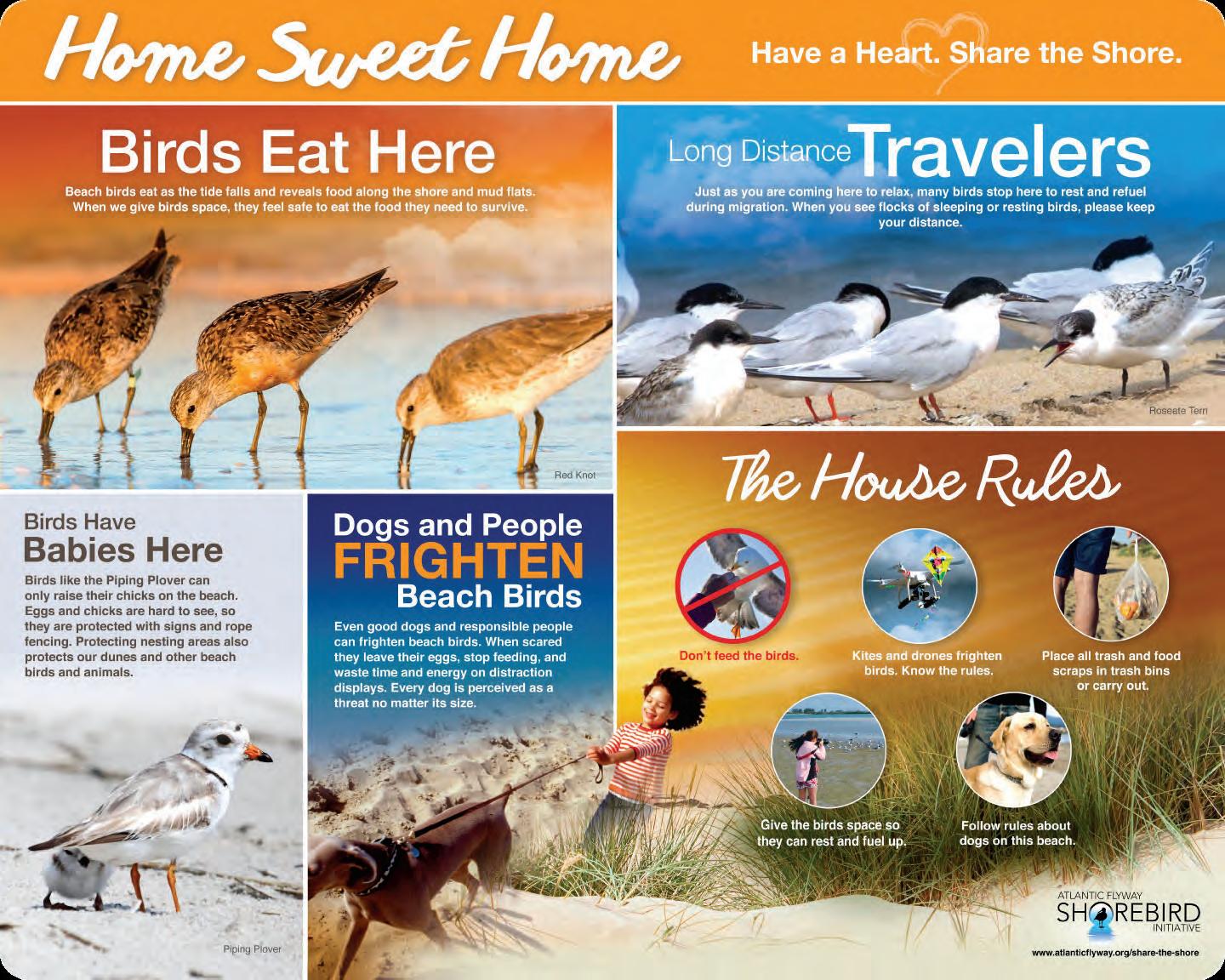




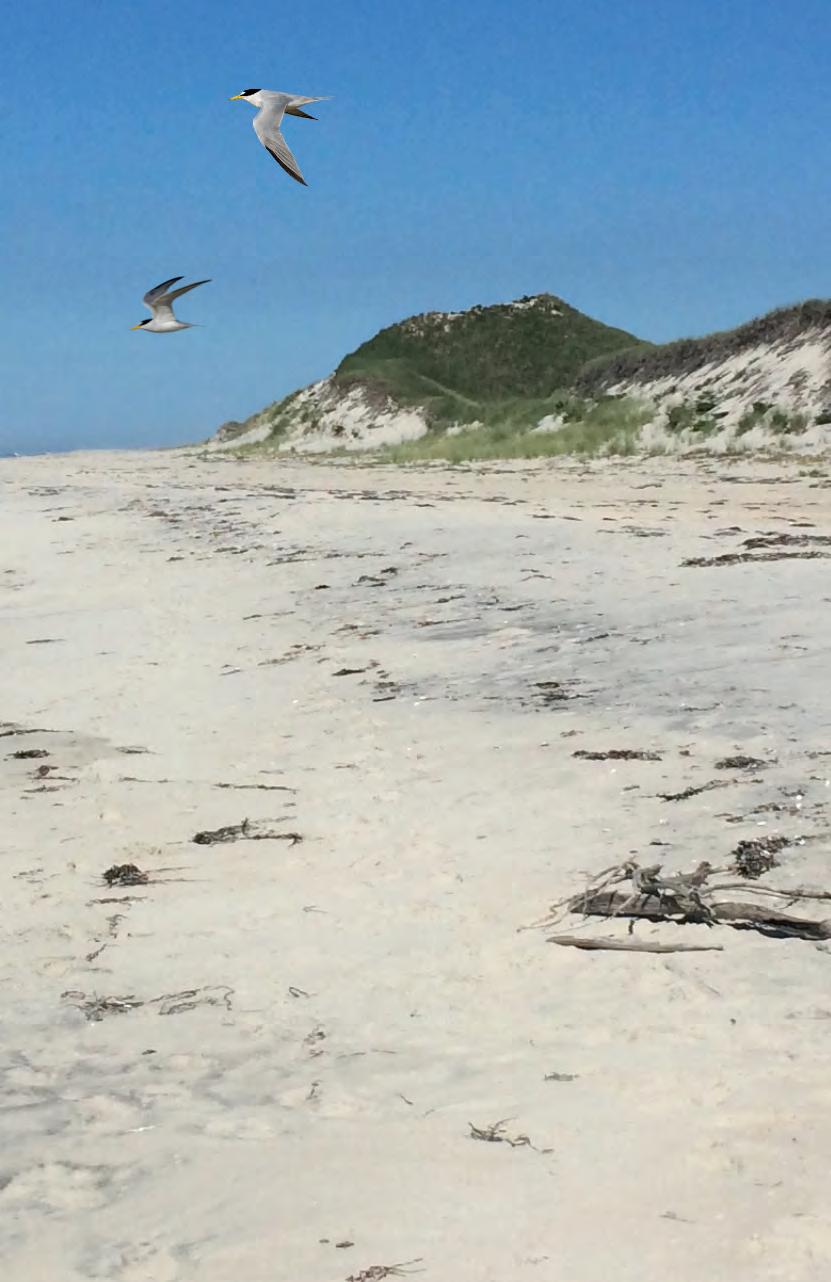





The key to longevity when storing your produce is keeping ethylene-producing and ethylene-sensitive food items separate.
Simply understanding which fruits and vegetables should be stored separately from one another can increase their lifespan, but there are additional, specific storage techniques that will keep them fresher even longer:
should be treated like a bouquet of flowers. Remove any rubber bands then place the stalks in a cup of water that you change regularly (daily is ideal, especially for green onions, whose water can get a bit stinky). Don’t over-fill the water, though — 1 to 5 Inches should do it. And do not crowd the items, or the stems will get slimy. Store these in the refrigerator.


Carrots and Celery are best stored submerged in water in a sealed container. You can keep them whole, or chop them to fit your needs. If you purchase whole carrots, cut off their green tops to prevent the greens from drawing water out of the carrots. Compost the tops or try them in a pesto.
Onions, Garlic, and Shallots
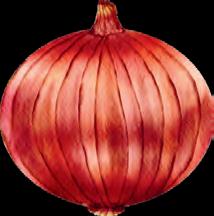
should not go in the refrigerator. They thrive best in a cool, dark spot. Place them in an uncovered container or bowl to allow for plenty of airflow. Once cut, they can be stored in an airtight container in the refrigerator.
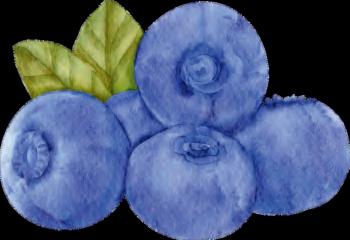

are susceptible to getting slimy and wilted. To avoid this, give them a rinse and dry them fully on a towel. Allow the greens to dry (or dry them in a salad spinner), then roll the greens up into a dry towel and pop them in the fridge. This will allow airflow and wick away excess moisture, keeping them fresh.

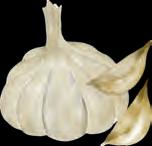
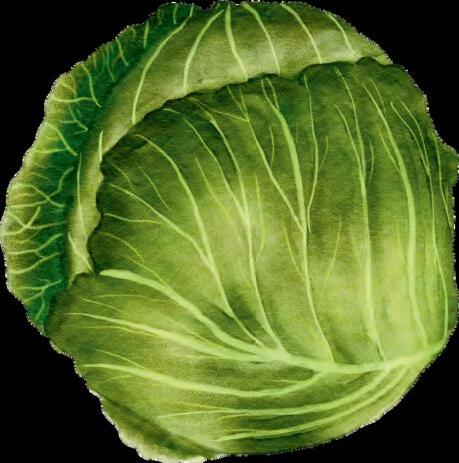
Cucumbers, Zucchini, and Squash are all ethylene-sensitive and should be stored in a high-humidity drawer where they are wrapped tightly in a towel to absorb excess moisture. Only wash them right before use to avoid sliminess. Bigger varieties of hard squash can be left out of the fridge for a while, as well.
Potatoes similar to the onion family members, should be stored in a bowl in a cool, dark area. However, they are ethylene-producing and should be kept a couple of feet away from ethylene-sensitive onions and garlic.
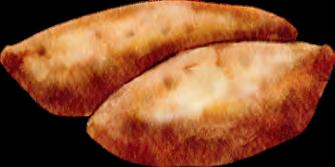
Berries should be washed in a 1:5 mixture of vinegar and water to kill bacteria and prevent mold spores, then drained and dried before they are stored. After they are thoroughly washed and dried, place them in a towel-lined, open container in the crisper drawer set to low humidity. Raspberries can be stored the same way, however, they should only be washed with water right before consumption to avoid a mushy, moldy mess.
Citrus Fruits do not continue ripening on a countertop and actually begin to decompose as they sit out, so they fare best in the fridge. Unless you are ready to eat them, refrigerate next to other non-ethylenesensitive items in the low-humidity drawer. Lemons and limes are ethylenesensitive, so keep these separate.
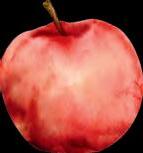
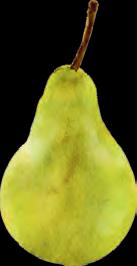
Apples and Pears can be stored in the fridge until they are ready to eat to maintain ideal crispness. These fruits produce ethylene, so keep them in the low-humidity drawer.

The rooms in our homes are ripe for change. The clothes in our closets, the products in our pantries, the bins in our basements. They might be made with less-than-planet-friendly materials, or come in packaging that will clog our landfills, and there just might be too, too, too much of everything. Where to start can feel overwhelming. Follow along as Mollie Doyle explores our shopping, living, and home habits, and leads us toward a healthier home — for both the people in it and the Earth it sits on.
That is what all of this is about: habits. Maybe we buy a brand because our mothers did. Maybe we buy something because we like the box. I am guilty of buying stuff out of habit or curiosity — not necessarily because I need it or am going to use it, which leads me to the first of my six simple rules:
RULE NO. 1: BUY LESS
According to the USDA, 40 percent of all food in the U.S. does not get eaten. Project Drawdown, one of the world’s leading sources for climate change solutions, compares this to 37 million cars’ worth of greenhouse gases. So this whole notion of stocking up does not serve us — in any sense of the word. As my family can tell you, I am obsessive about keeping my fridge and pantry clean and organized. Even with a focused effort on not buying too much, I still find uneaten, spoiled food. Things that have helped us get better at wasting less:
· Shopping with a grocery list and sticking to it.
· Reflecting rather than reacting as we shop.
RULE NO.
When you can, swap your products housed in plastic or aluminum for ones in glass or paper packaging — particularly with things where there are easy and delicious alternatives. These are easy wins. Sometimes the solutions to using less plastic are just yummier: Grey Barn bread in a paper bag vs. the storebought bread in plastic. A no-brainer.
RULE NO. 3: BUY FROM THE BULK BINS
This does not mean buying in bulk, because that will lead to food waste (see Rule No 1). When it is possible again, we can all bring our glass jars to Cronig’s, weigh them, and fill them. Zero waste. Hopefully, other shops will follow this example, and follow suit. In the meantime, I am disappointed that so many of the small shops and farm stands here sell things like nuts,
chocolate chips, and other products in plastic containers when paper bags are an easy and better alternative.
Every few months I give myself a goal. One challenge for us has been plastic bags. We stopped buying them, and I’m happy to tell you we are still alive. Yes, it is occasionally a pain in the butt, but we’ve found alternatives — Mason jars, silicone bags. Not using plastic bags continues to be our biggest challenge, as so much produce comes in prepackaged plastic bags. Prepandemic we could rebag our kale from Ghost Island’s plastic bags, but right now it’s not an option. So we reuse these bags.
RULE NO. 5: STORE IT
Another irony of the zero-waste movement here in the U.S. is that while there is not a lot of attention to how the food is originally packaged, we have a zillion online stores selling us products to store our food once we have it — food huggers (they literally hug your food and serve as a cling wrap replacement), food stashers, beeswax wrap, Mason jars, silicone bowl lids, stainless steel boxes. All of these alternatives are worth investing in, if you will use them. In our house, Mason jars are a staple for holding everything from grated Parmesan to loose tea and sugar. While some are fans of the beeswax wrap, I find it tends to hold the smell of whatever food it is wrapped around. So I opt for silicone products, which don’t hold odors, and can tolerate super-hot water and soap many times over.
RULE NO. 6: DISPOSE OF IT WELL
Compost first, then recycle, then and only then trash. Have a compost pile, use a friend’s compost pile, bring your compost to Island Grown’s compost site, or compost in your town’s composting program. It’s easy, and makes a huge difference. According to Project Drawdown, “Nearly half of the solid waste produced globally is organic or biodegradable. Much of it ends up in landfills; there, it decomposes in the absence of oxygen and produces the greenhouse gas methane … Rather than generating methane, the composting process converts organic material into stable soil carbon, while retaining water and nutrients of the original waste matter. The result is carbon sequestration as well as production of a valuable fertilizer.” (See how Dear Dot describes the benefits of composting: bit.ly/DOT-compost.) Composting and recycling will drastically minimize your trash output.
To celebrate our abundance of wild-caught local seafood, we’re happy to share some of our favorite recipes from different seasons:
Bay Scallops With a GingerOrange Sauce, Oysters With a Strawberry Mignonette, and Classic New England Whitefish Chowder
The local season for bay scallops from the island starts in late fall and continues until the scallops run out in February or March. The brightness of the ginger orange sauce here works perfectly with the pristine scallops to balance the richness, accompanied by some quick-cooking bok choy. In recent years, there has been fewer scallops harvested and so the price tends to soar unfortunately. You can usually feed 4 people with a pound, or 1/2 pound for 2. Serve over jasmine rice flavored with a little coconut oil and butter.
Serves 4
Ingredients
3/4 - 1 lb bay scallops
2-3 bunches of baby bok choy, end of bulb sliced off, leaves rinsed
21/2 Tbsps butter, divided
1 cup fresh orange juice (from 3 juicy oranges)
1 ginger coins, sliced from peeled fresh ginger e oil

salt and pepper ange slices, sliced
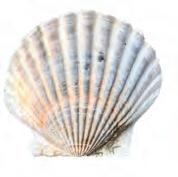
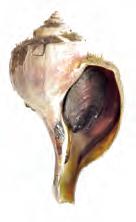
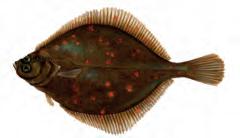

1. Remove the tiny side muscle where sand can hide and rinse the scallops. Dry with a paper towel. Set aside.
2. In a skillet, sauté the bok choy until wilted, but still crunchy. Set aside.
3. Start the sauce by adding the fresh orange juice and ginger coins to a saucepan. Bring to a boil, and then simmer on mediumhigh for about 6 to 8 minutes to reduce to about 1 /2 cup. Remove ginger coins and remove from heat. Add 2 tablespoons cold butter, cut into pieces, and swirl off the heat, stirring with a whisk or wooden spoon until butter is incorporated and sauce is nicely thickened.
4. If using 1 pound of scallops, heat two cast-iron or thickbottom pans over medium-high heat. (Two pans helps scallops brown nicely.) Add 1/2 tablespoon of butter and 1 tablespoon of olive oil to coat. Sear scallops on one side, about 2 minutes, until golden. Season with salt and pepper as you are cooking. Turn and sear the other side, 1 to 2 minutes more.
5. Rewarm the bok choy and then place in the center of the plate with jasmine rice. Divide scallops onto 4 plates. Spoon the sauce around the scallops. Garnish with a slice from an orange.



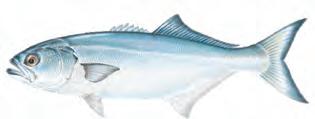
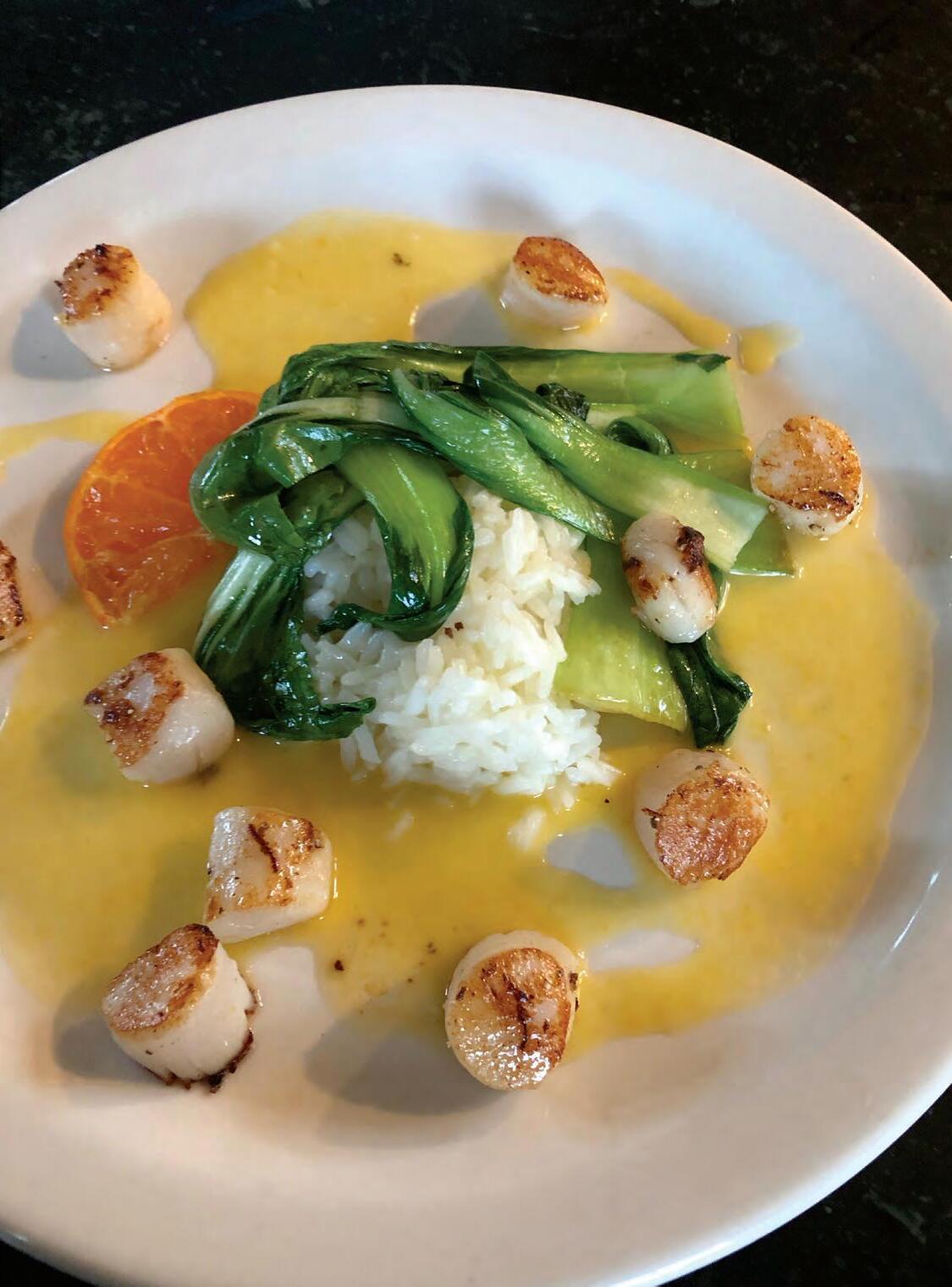
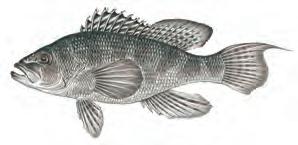
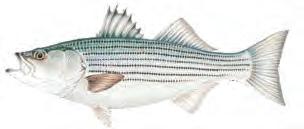
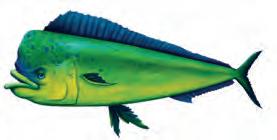
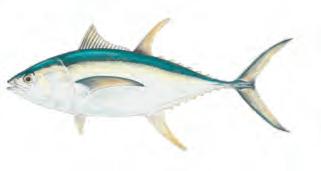

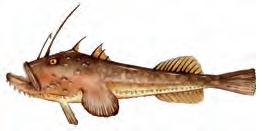

Recipe by Karen Covey
Photo by Jennifer Jeanne Johnson
Yield: Serves 12
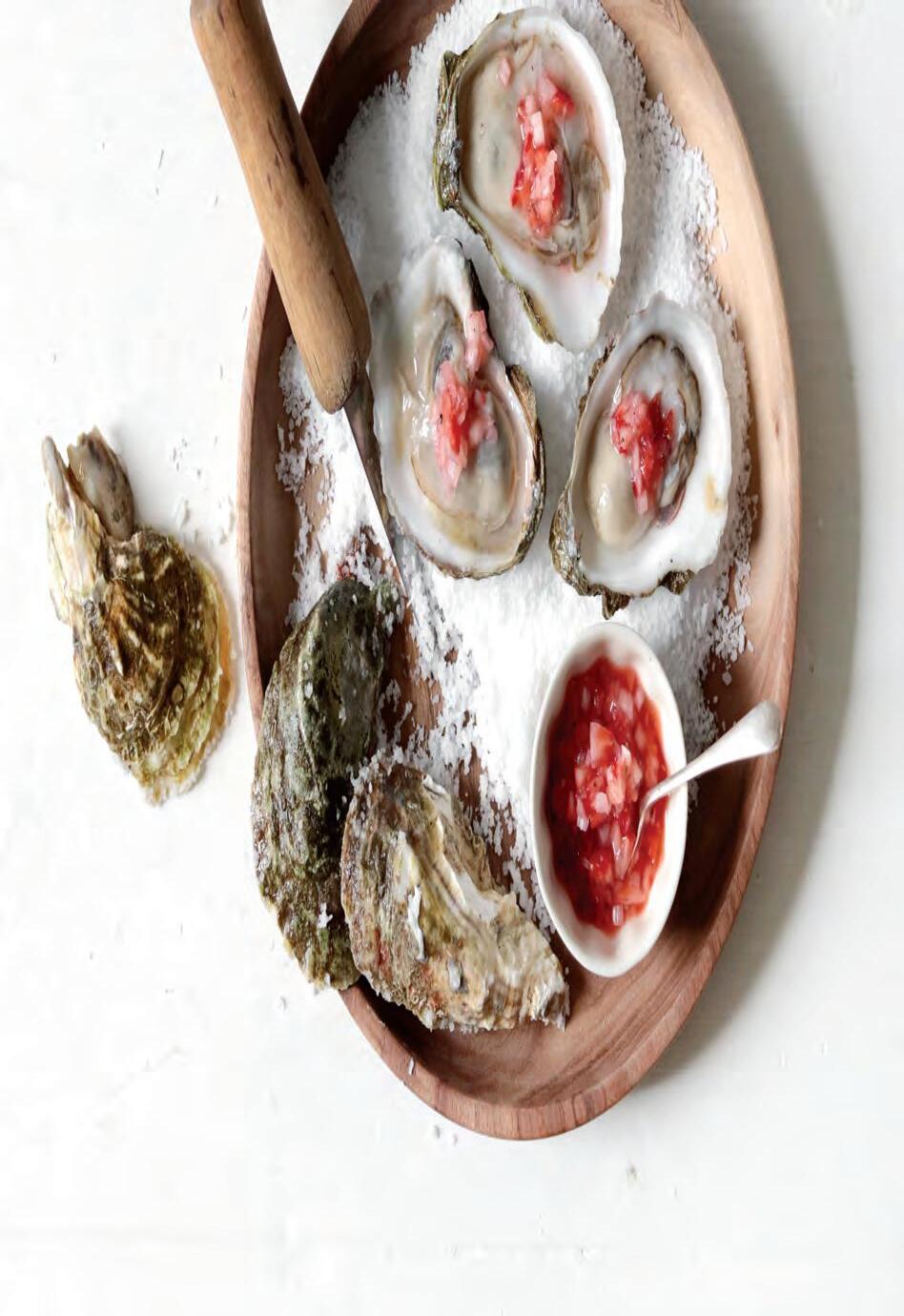
Try this refreshing combination of local oysters and strawberries as the basis for this mignonette. Recipe by Karen Covey, author of The Coastal Table: Recipes Inspired by the Farmlands and Seaside of Southern New England.
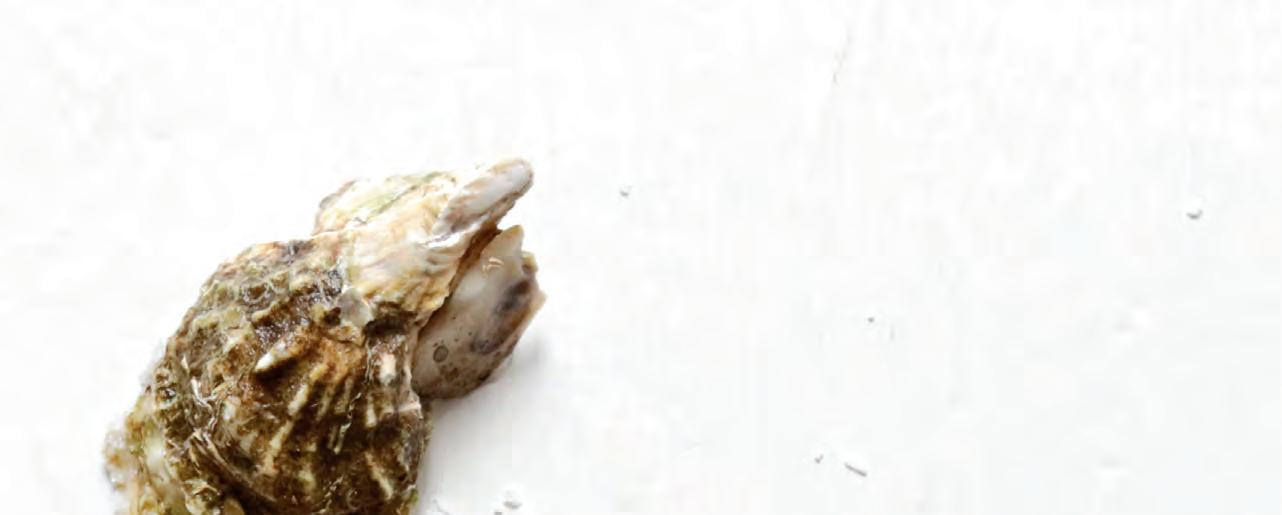
12 freshly shucked oysters, for serving
2 Tbsps shallot, finely minced
2 Tbsps minced strawberries
2 Tbsps champagne or white wine vinegar Kosher salt, to taste
Freshly ground black pepper, to taste
1. Place shallot, strawberries, and vinegar in a bowl and season with a pinch of salt and pepper. Stir until combined. Cover and chill until ready to serve.
2. To serve, add a dollop of mignonette to each oyster just before serving.


For centuries, this recipe has been the basic formula for the classic fish chowders of New England. Fish chowders actually predate clam chowders and were the first types of chowders made in Colonial days. In the era when the cod family was the backbone of New England’s fishing economy, it was also the backbone of most fish chowders. As chowder’s popularity spread, so did the inclusion of other types of fish, though cod and haddock are still the most common choices today. They certainly make great fish chowders, but any type of lean, mild whitefish is perfectly suitable for this recipe. Many of the undervalued whitefish species, such as black sea bass, monkfish, tautog (blackfish), dogfish, and scup make sublime fish chowders too.
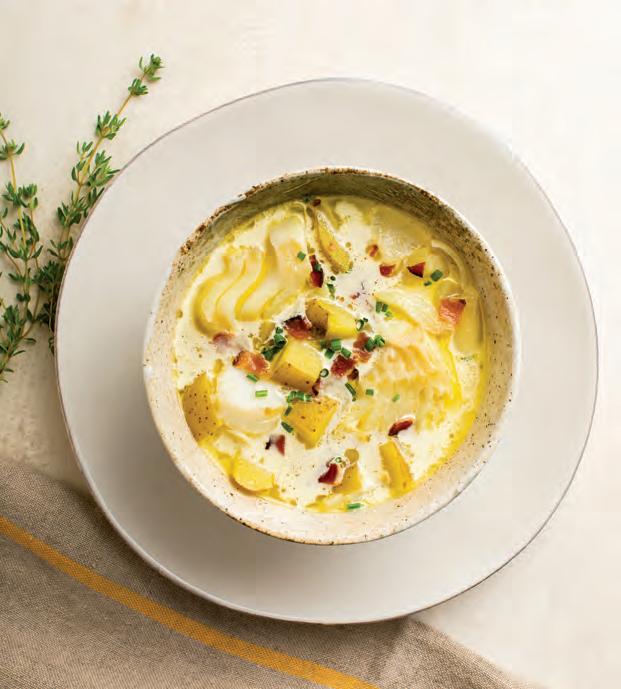
Editor's’ Note from contributing food editor Catherine Walthers: This recipe comes from Craig Fear’s newly published cookbook, New England Soups from the Sea, which contains some eighty locally sourced soup recipes that honor the coastal traditions of the Northeast (2022, Countryman Press).
Yield: Serves 6
4 oz ounces fatty slab bacon (about 4 large strips) or salt pork, roughly diced into inch pieces
2 lbs any lean, mild whitefish fillets
1lb Yukon gold potatoes, cubed
2 Tbsps butter, if needed
4 cups fish stock (see note)
1-2 cups heavy cream and/or half-and-half
1 large yellow onion, roughly diced into inch pieces
4-5 fresh thyme sprigs, leaves removed and stems discarded
2 dried bay leaves
Salt and freshly ground black pepper
Salt pork cracklings or bacon bits
Fresh chives, chopped
Fresh parsley, chopped
1. Heat the bacon in a medium stock pot over low heat until a few tablespoons of fat render out. Raise the heat to medium and brown the meatier pieces, being careful not to burn them. Remove the browned pieces with a slotted spoon but leave the fat in the pot. Before serving the chowder, you can reheat the crispy browned cracklings from the salt pork or the bits from the bacon and add them as a topping.
2. Add the butter, if needed, for additional cooking fat. Add the onions, thyme, and bay leaves. Sauté about 5 minutes, until the onions are softened.
3. Add the fish stock and bring to a boil.
4. Add the potatoes, cover the pot, reduce heat, and simmer for 10 to 12 minutes, until the potatoes are cooked through.
5. Add salt to taste.
6. Add the fish and simmer gently for a few minutes. Remove the pot from the heat, cover, and let the chowder sit until the
fish is cooked through. Thicker and denser pieces of fish will need a little more time to cook than thinner and flakier pieces.
7. Once the fish is cooked, add 1 cup of the heavy cream, stir gently, and taste. Add up to 1 more cup of heavy cream or half-andhalf to desired taste.
8. Ladle into individual bowls and add optional seasonings to taste.them as a topping.
Fish stock note: New England Soups from the Sea contains 7 recipes for different types of fresh seafood stocks, and they are used as the foundation for many of the chowders, bisques, and stews in the book. But making a seafood stock can be intimidating for some, so author Craig Fear offers suggested alternatives and one favorite store-bought fish stock. For this fish stew, if you are not making a fresh seafood stock, he recommends either using bottled clam juice or a store-bought fish stock called Aneto Fish Broth, available in some markets and online. Fear says he was "actually shocked by how good this product tastes.” He suggests avoiding pretty much every other commonly found commercial fish stock such as Imagine or Kitchen Basics.
To : Bluedot Living
From: The Folks at IGI and the Island Climate Action Network
Subject: Climate Change — The Top Nine Things You Can Do to Help.
Compost! If you don't compost at home, bring your food scraps (including meat, bones, dairy, lobster shells, any food scraps) to your local town transfer station. Bruno's will pick it up and bring it to the Island Grown Farm to be turned into compost, or you can bring it to the IGI farm yourself at 80 Stoney Hill Road, down the drive from Island Alpaca. More information can be found on the IGI website here: igimv.org
Kate Wood discusses crops and regenerative practices at Beetlebung Farm in Chilmark.
Support local farmers by buying local food. Head to the West Tisbury Farmers Market on Wednesday and Saturday mornings, or visit one of the Island's many farm stands. Check out the Island Farm Map here: marthasvineyardagriculturalsociety.org/ local-farms
3
Grow food at home. This can be in a sunny window, in pots on a porch, in a vegetable
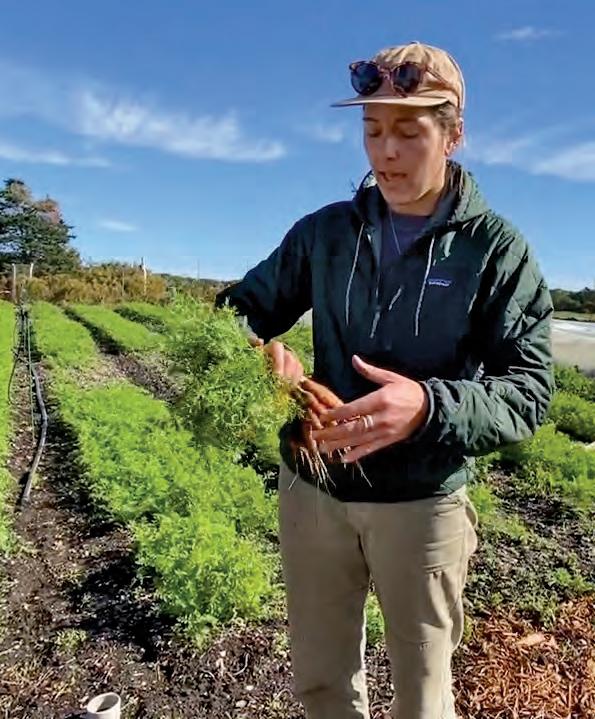
garden, or via fruit trees in your yard. See regenerative backyard gardening resources on the IGI website here: igimv.org/backyard-growers
4
Reduce your lawn footprint, and plant edibles and/or native plants instead. This can reduce usage of water, fertilizers, and fossil fuels required for mowing. Check out Biodiversity Works' Natural Neighbors program (biodiversityworksmv.org/programsprojects/natural-neighbors/), and/or the lawn footprint reduction tips from Garden Wisdom's Roxanne Kapitan on the IGI website, here: igimv.org/ backyard-growers
5
Get a free home energy audit through Cape Light Compact to find ways to save money and energy in your home. (capelightcompact.org)
6
Reach out to an energy coach at Vineyard Power (Vineyardpower.com) if you need (free!) advice on improving energy efficiency in your home, getting a heat pump, buying or leasing an electric vehicle, installing solar panels, and more.
7
Get an energy efficient heat pump for heating and cooling! Check out rebates, incentives, and loans available through the MassSave program and Cape Light Compact.
8
Adjust your thermostat (up in the summer and down in the winter) to use as little energy as possible for heating and cooling your home, especially if you're going to be away from home for a period of time.
9
Become a member of Island Eats (islandeatsmv.com) to access reusable stainless steel takeout containers at many local restaurants, rather than using single-use packaging.
We have been farming for 31 years and creating big changes in our farming during COVID. Previously, we were a wholesale farm catering to chefs and small grocers. In 2020, we built a small year-round farmstand that quickly became a lifeline for those who needed to shop for their food in a safe, intimate way. We built a commercial kitchen to create delicious food from our vibrant crops. Our vegetables, greens, fruits, herbs, mushrooms, and meat (pork and chicken) seasonally influence the prepared food's flavors, menus, and beauty. Our famous pet pig, Crouton, lives behind our farm stand with her piglets during summer, and customers can see a happy pig rearing her babes.
Yield: Serves 4 to 6
1/2 cup olive oil
2 Tbsps butter
1 3.5-4lb. chicken
5 cloves garlic
1 lemon, sliced
1 bunch chives
1 bunch thyme
1 lb. potatoes, cubed
1 bag (4oz.) baby arugula
1. Preheat oven to 400 degrees.
2. Spatchcock chicken by cutting out the spine and neck. Push the chicken down between the breast bone to lay flat. Pat chicken dry, season with salt and pepper, and place in a roasting pan over cut lemon slices, breast side up.
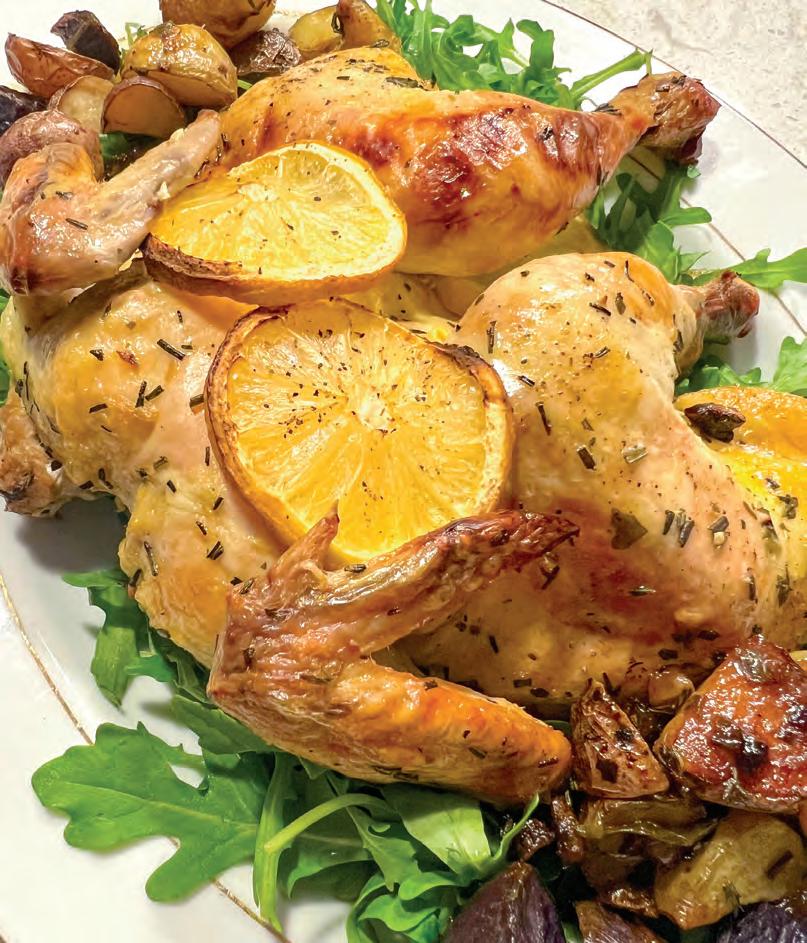
3. Place potatoes around the chicken to fill the rest of the pan.Season potatoes with salt and pepper.
4. Roughly chop the herbs and garlic, place them in a small pot, and mix with enough olive oil to cover everything. Add the butter to the pot and heat on low for 5 minutes.
5. Pour herb mix over chicken and pota toes.
6. Place roasting pan on rack in the lower third of the oven and roast for 1 hour, until chicken skin is crispy and the internal temperature reaches 165 degrees.
7. Let chicken rest for 15 minutes. Carve and serve over fresh arugula tossed in lemon juice.
8. Spoon chicken drippings over arugula and potatoes.
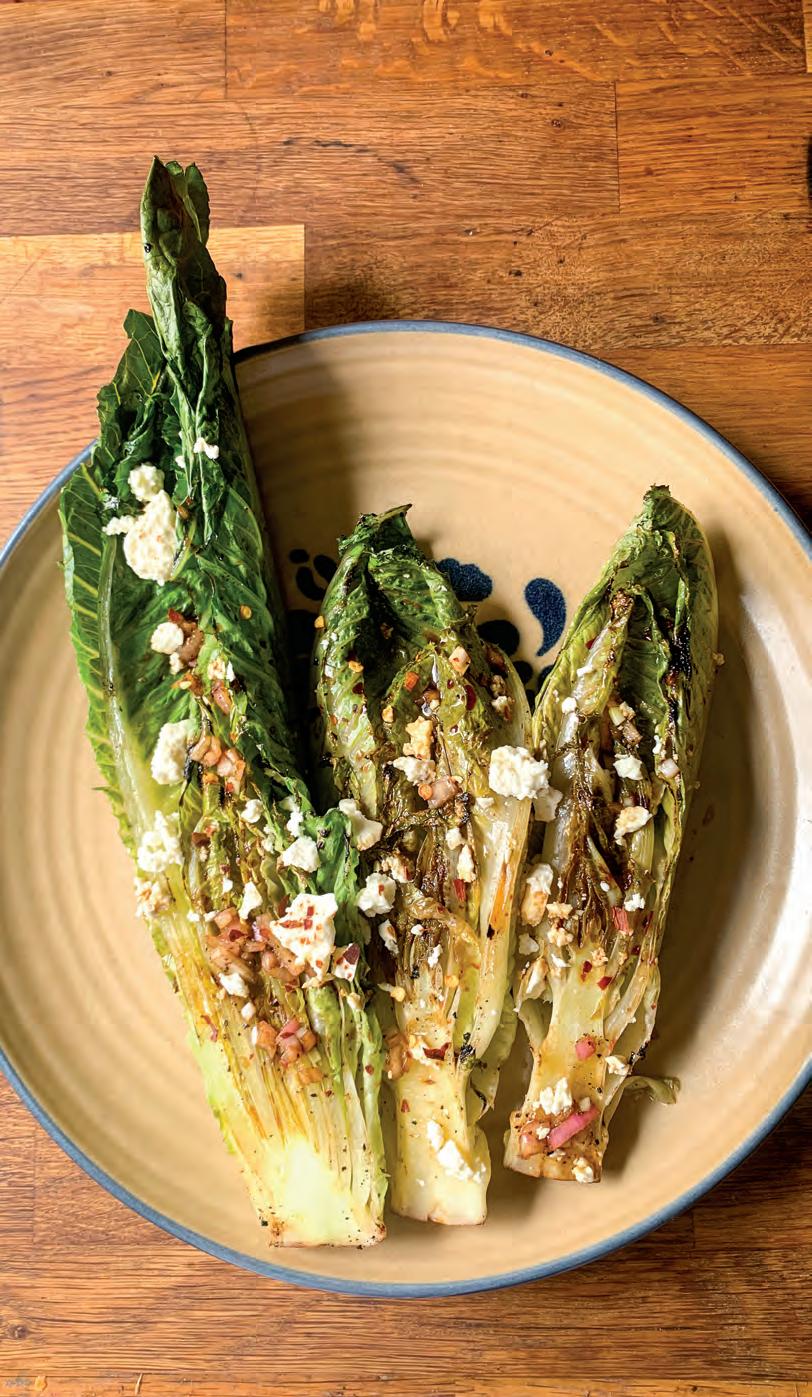
Recipe by Mallory Watts
Photo by Whitney Multari
Shallots and Little Gem lettuce heads can be purchased from Milkweed Farm, and Mermaid Farm's feta is the perfect topping.
Yield: Serves 6
6 Little Gem lettuce heads, sliced in half from stem to stern
6 Tbsps olive oil, plus some for brushing the lettuce
1 Tbsp Spanish sherry vinegar
1 Tbsp balsamic vinegar
2 Tbsps shallots, finely chopped
Crumbled feta cheese
Pinch of red pepper flakes
1. In a small bowl, combine shallots and vinegars. Whisk in olive oil and season with salt and pepper to taste.
2. Heat grill to medium, and lightly oil the grate. Brush the lettuce with a little olive oil and grill for 1-2 minutes on either side until lettuce is lightly charred.
3. Plate lettuce cut-side up, drizzle with dressing, top with feta cheese and sprinkle with crushed red pepper flakes.
This recipe (which I copied onto a file card two decades ago and have made so many times that I no longer remember where I found it) is a family favorite and always appears on our Thanksgiving table. Both of my adult children liked it even when they were young and wouldn’t eat much that was green, and now they both make it themselves in their own homes.
Yield: Serves 6 to 8
For the salad:
24 large Brussels sprouts
1 cup walnut pieces
4 oz Parmesan cheese, finely grated (about ¾ cup)
For the dressing:
3 Tbsps apple cider vinegar
2 tsps Dijon mustard
Salt and pepper to taste
9 Tbsps olive oil
1. Using a box grater, a mandoline, or a food processor with its shredder blade, shred the Brussels sprouts. Place in a serving bowl.

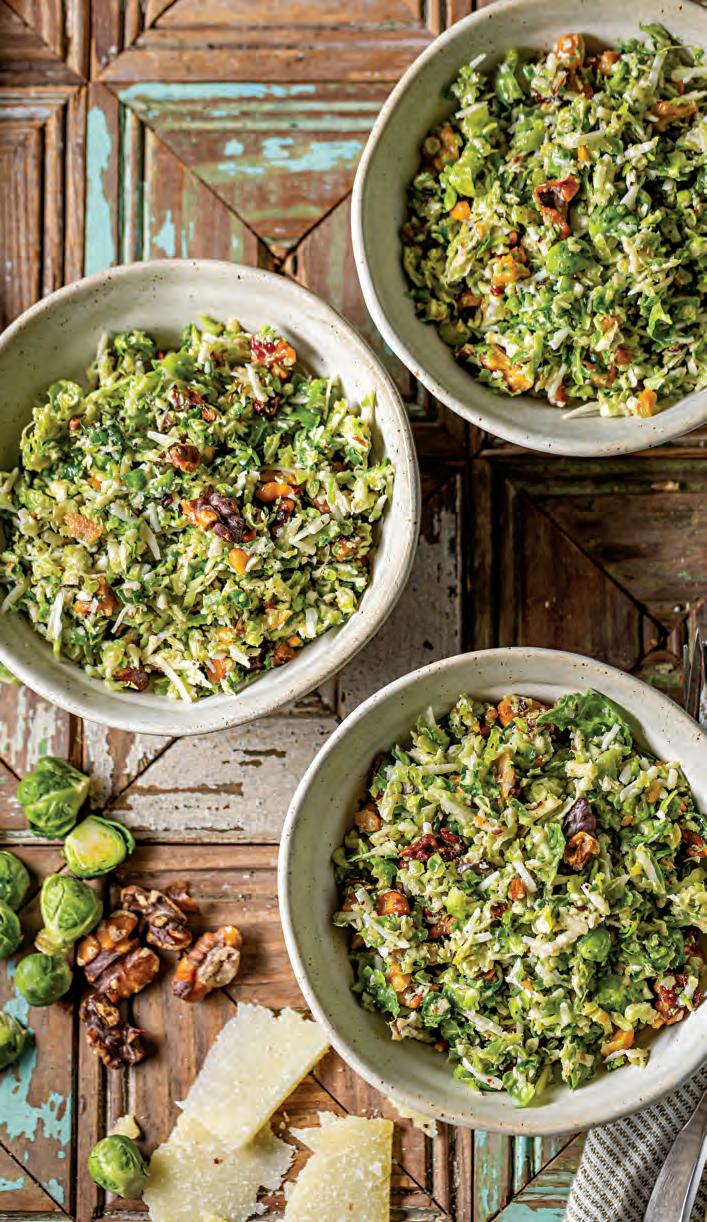
2. In a skillet over medium heat, or in the oven or a toaster oven set at 375 degrees, cook the walnut pieces until they darken in color, but be careful not to burn them. When they’ve cooled, add them to the shredded Brussels sprouts, along with the grated Parmesan cheese. Mix thoroughly.
3. Make the dressing: In a medium bowl or a large measuring cup, mix the apple cider vinegar, Dijon mustard, and salt and pepper. Slowly drizzle in the olive oil, whisking constantly, until the dressing comes together.
4. Pour the dressing over the salad, toss, and serve.
Plants that help suppress grass
Daffodils, Iris, Chives, Leeks, Garlic

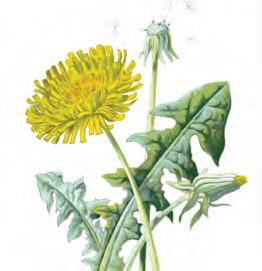
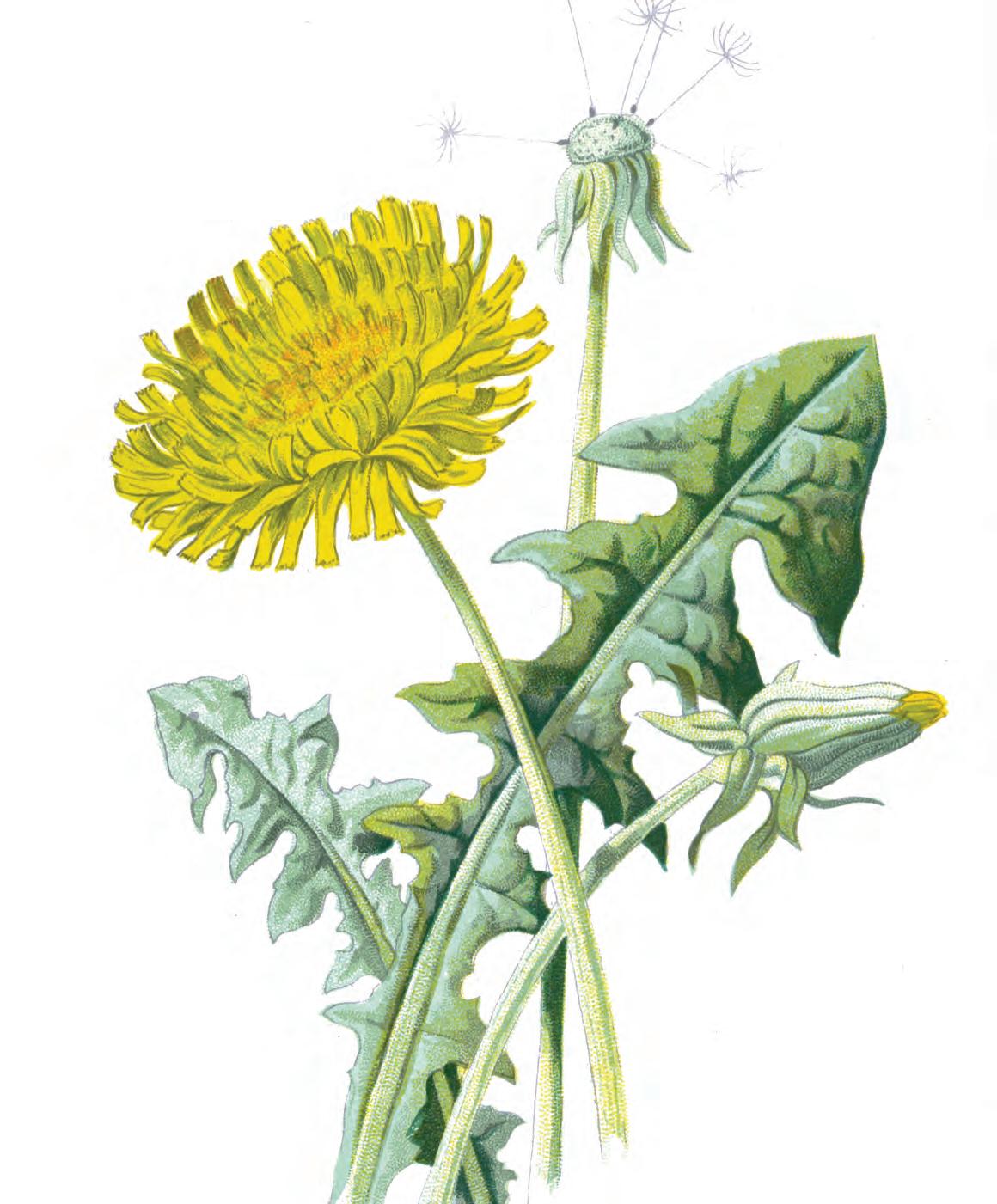
Plants that attract a variety of beneficial insects, and that help pollinate Dill, Fennell, Coriander
Plants that repel potentially damaging insects
Nasturtium, Marigold, Rue
Plants that naturally provide mulch Rhubarb, Comfrey, Borage
Plants that increase nutrient content of the soil
Yarrow, Chicory, Dandelion
Plants that increase the amount of nitrogen in the soil
Clover, Beans, Alfalfa, Peas
To read more about planting a fruit tree guild in your backyard, go to bit.ly/MVFruit-Tree-Guild.
From: BiodiversityWorks Natural Neighbors Program
Subject: Best practices for a Wild Backyard
The most successful pollinator habitats are comprised of native wildflowers that serve and are served by native insects — they have evolved together for the specific environmental conditions that exist where you live. In many cases, native plants have been cleared to make room for non-native ornamental
plants that do not act as hosts to their larva. These ornamentals may have lovely fancy flowers but they provide limited nutritional value to the creatures who need the nectar and pollen from native plants to thrive. Unfortunately, our native plants are too often thought of as “weeds” and mowed down or pulled up before they
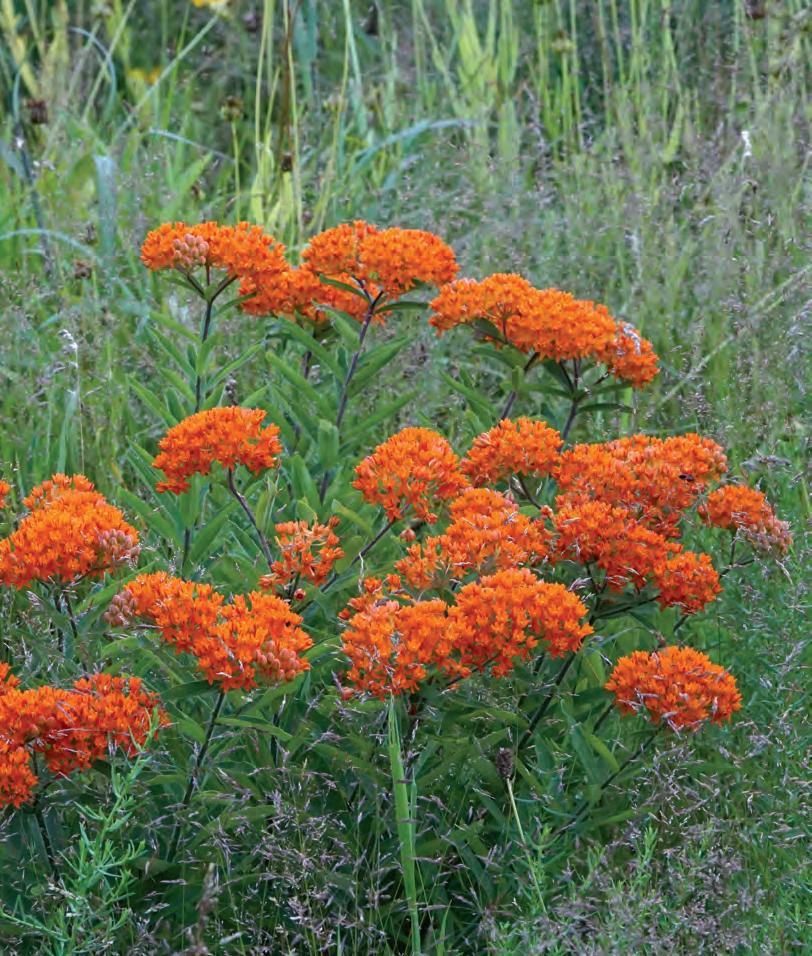
ever get to their flowering and seed stage, and as a result, insects suffer. Planting native perennials (and grasses) is a great way to create hyper-productive spaces that support birds, pollinators, and other beneficial insects. Working with native species is particularly enjoyable — they tend to be low maintenance and only require supplemental watering to get the roots established. They are also adapted to the Island's soil profiles and do not require additional fertilization. So, one of the best things you can do to support biodiversity is to simply grow native.
– Rich Couse, Natural Neighbors Program Director1
Plant native plants in patches (not just a few here and there)
2
Provide a year-round water source ; see info here: biodiversityworksmv.org/ becoming-a-natural-neighbor-water-sources/
3
Use dark-skies friendly outdoor lighting (to prevent impacts on moths and other nocturnal wildlife)
· Limit outdoor lighting to where you need it and when
· Choose appropriate bulbs and downcast fixtures
· Use timers and update them with the season
4
Add anti-collision UV stickers or coatings to windows to prevent bird strikes ; see info: biodiversityworksmv.org/ways-toprotect birds from-window-collisions/
5
Switch from an open compost pile to a closed bin (reduces rat infestations and stops subsidies to generalist predators such as crows, skunks, raccoons)
6
Keep your cat indoors. Catios are great! (biodiversityworksmv.org/ cats-outdoors catios-and-fencing-to-createsafe-spaces-for-your-pets-and-wildlife/)
– Luanne Johnson, BiodiversityWorks founder, and wildlife biologist


Meet The Coop, aka Doug Cooper, aka our new Mr. Fix-It. Doug is renowned on Martha’s Vineyard for his ability to fix, well, pretty much anything. And we know that fixing our stuff keeps it in use, saves us money, and reduces landfill. – Lucas Thors
It ’s a piece of equipment that most households have lying around — a beat-up, neglected garden hose. Quality hoses can be expensive, and discarding wrecked hoses improperly can mess things up, so please keep them out of the recycling bin. After arriving at recycling centers, hoses often get wrapped around gears in pelletizers and shredders, and tangled in conveyor belts.
Instead, let’s make that old garden hose like new again. Mr. Fix-It shows us how.
WHAT YOU’LL NEED: A plastic or metal hose fitting/ hose repair kit, a pair of sharp scissors or pruning shears (anything that’s sharp enough to safely cut the hose). Optional: Five gallon bucket, environmentally friendly cleaning solution, water, sponge or rag.
STEP 1: Cut the hose as close to the rusted, corroded, or leaky end fitting as possible.

BEFORE YOU GET TO WORK: It’s your prerogative whether you want to replace your hose fitting or not. In The Coop’s case, his hose had been sitting outside all winter, and the fitting had become so rusted that he could hardly unscrew the spray nozzle.
STEP 2: Slide the plastic hose repair clamp onto the hose. You will eventually tighten the clamp over the replacement fitting and the end of the hose.
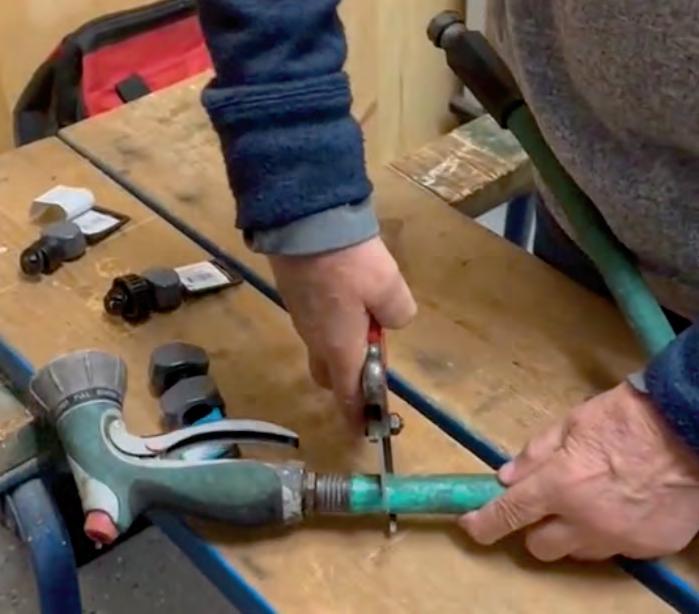


STEP 3: Put a little bit of dishwashing liquid or some kind of lubricant onto the new replacement fitting, then insert the fitting into the hose end. Make sure the hose repair clamp is in contact with the new fitting, then tighten the clamp to secure the fitting

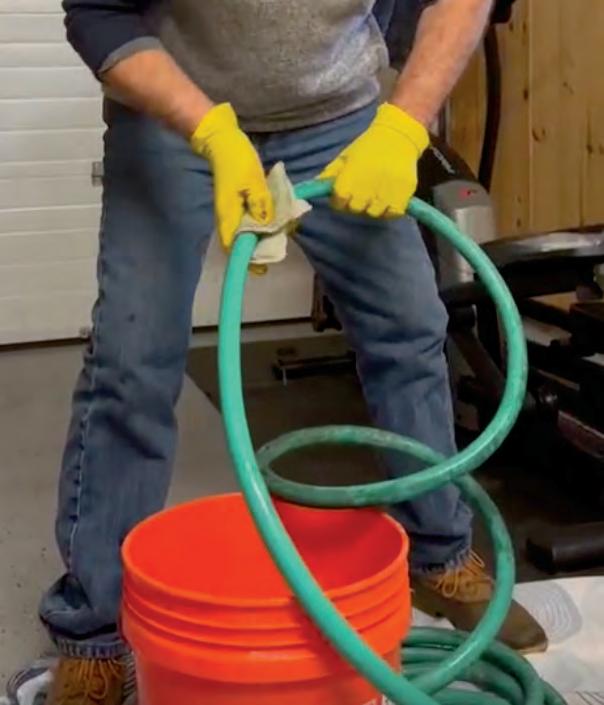
STEP 4: Screw the nozzle end of the new fitting onto the end you just attached, and voila!
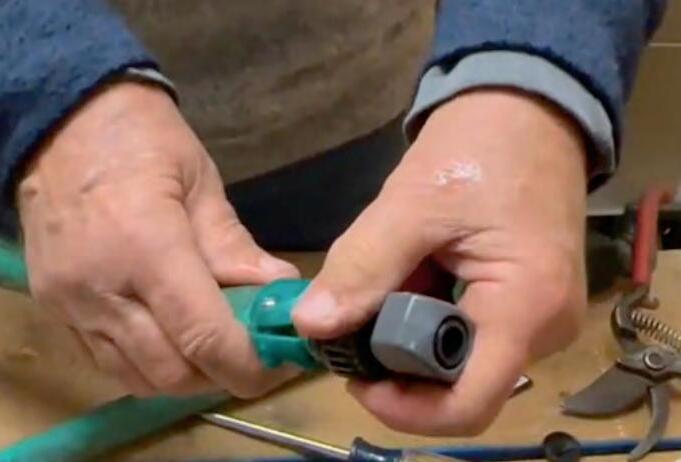
MR. FIX-IT TIPS AND TRICKS:
For a hose that looks like new, mix a small amount of sustainable cleaning solution with water in a five gallon bucket, then scrub your hose with the solution over the bucket with a sponge or rag. Continue along the length of the hose to remove mildew and dirt stains.
Use this same repair technique in concert with a hose repair junction (that utilizes two male fittings that replace the damaged area) to fix cracks or splits in your hose that are unable to be repaired with tape.
Most hoses are made of vinyl or rubber, and can degrade over time if exposed to the elements. Generally, rubber hoses are more durable and more easily repaired than vinyl. Store your hose indoors to best preserve it. Hoses should be rolled up and drained of any water when not in use — water expands/contracts depending on temperature, which puts more wear on the hose.
Have something you want fixed?
Send your question to Mr. Fix-It at editor@bluedotliving.com





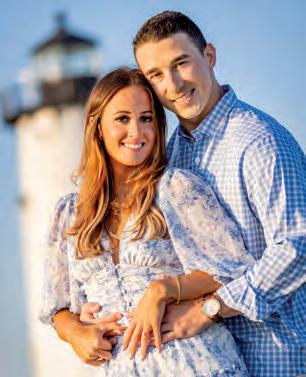

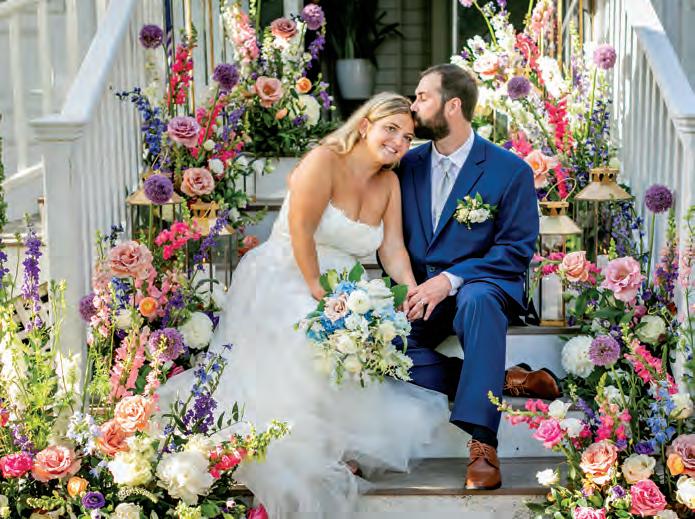

How do we as individuals and small businesses play a role in achieving this goal? Follow these simple steps:
Start from the beginning of the roadmap, or hop on along the way for Island-based, Vineyard Power-suggested resources.
• Does your household income fall below 80% of the state median income? If so, you may be eligible for up to 100% rebates for home weatherization and air-source heat pumps.
• Enroll in Income Eligible Ratepayer Assistance programs to reduce electricity costs by over 90%.
• Find out more by calling Vineyard Power at 508-693-3002 or sign up for a no-cost Income Eligible Coaching Session at vineyardpower.com/energy-coach
• Increase energy e ciency through weatherization and installing air-source heat pumps and heat pump hot water heaters.
• Develop a home decarbonization plan, maximize available rebates, finance out of pocket expenses through a 0% HEAT Loan, and receive up to $3,100/year in federal tax credits through the Inflation Reduction Act (IRA).
• Begin by signing-up for a no-cost Home Energy Assessment through Cape Light Compact’s Community First Partner, Vineyard Power at 508-504-9508
• Receive a $10,000 rebate on a whole-home heat pump system.
• Displace your fossil fuel heating, hot water, and stovetop systems and save on installment costs.
• Visit vineyardpower.com/residential for more information.
• Take advantage of IRA tax credits and purchase a new or used electric vehicle. Pair the EV tax credit with the Alternative Fuel Vehicle Credit of 30% up to $1,000 for EV charging equipment
• Install an at-home EV charging station and receive a $700 Eversource rebate on installation costs.
• Find public charging stations on MV at mvy.com/ev-charging-stations
• Reach out to Vineyard Power for a no-cost EV Coaching session to get started 508-693-3002 or vineyardpower.com/energy-coach
• Once you electrify your home or business, and your vehicle, consider adding solar to match electricity consumption!
• Take advantage of a 30% Federal Investment Tax Credit and up to $1,000 MA Residential Energy Credit on the cost of the system.
• No-cost Energy Coaching service allows community members to ask questions about solar, EV’s, and building mechanical systems to a nonpartisan third-party expert.

For more information and to speak with an energy coach, please reach out to Vineyard Power vineyardpower.com · 508-693-3002
Editor’s Note: Some of these require off-Island trips. And always try posting still-usable items to the Facebook groups MV Stuff for Sale and MV Free Items or checking to see what our local second-hand stores will accept (see our list of those in our Handbook, page 15). Where we haven’t listed websites below, it’s because they are easily Googleable. We know there’s plenty we haven’t yet covered (we’re working on it!) so please tell us what we’re missing. And if you know of a way to get rid of it, please share it with us at editor@bluedotliving.com. For a more extensive list, visit bluedotliving.com/bluedots-guide-to-getting-rid-of-almost-everything
Sure you can turn to the Facebook group MV Stuff for Sale your still-has-some-life-left-in-’em fridges, freezers, dehumidifiers, and air conditioners, but for those that have nothing left to give, check out the Environmental Protection Agency’s Responsible Appliance Disposal (RAD). Select “Massachusetts” in the RAD Partner Locator to find who partners in your area that will dispose of these appliances in an earth-friendly way.
Unopened, antifreeze can last forever and opened, it can be used for up to eight years. However, if you need to recycle a bottle of antifreeze, plenty of auto parts shops accept certain car fluids, so ask your local shop!
Martha’s Vineyard Refuse District offers four drop-off locations in Edgartown, West Tisbury, Chilmark and Aquinnah. There is a special container at each of these facilities where residents can leave their rechargeable batteries. The facilities then transfer battery waste to Fall River to be recycled. The great news — dropping off your used rechargeable batteries won’t cost you a dime!
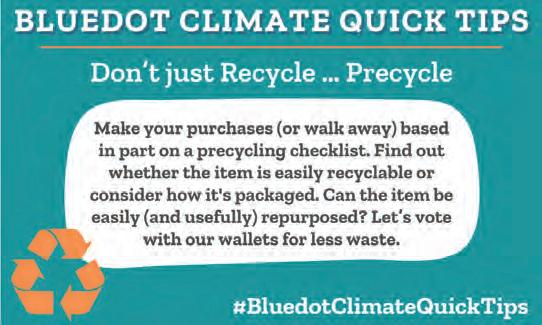
We are huge fans of Little Free Libraries, where you can drop off or pick up your latest read. But if it’s time to purge your personal library and it requires more space than a little house on a pole offers, then try:
• Chicken Alley will take some books (call for guidelines)
• Your local library (call ahead; there might be special dates or guidelines)
It can take over 200 years for textiles to decompose in the landfill. Instead of sentencing your old bras to that slow death, give them a new life by sending them to Bra Recyclers. This organization accepts old bras and donates them to women in need, including survivors of domestic violence and human trafficking, women who are homeless or living in poverty, and women struggling with medical expenses, such as breast cancer survivors. Bra Recyclers sends usable bras to these women, and will recycle unusable bras — so feel free to donate your bra even if it isn’t in pristine condition.
PLANET AID AND I SUPPORT THE GIRLS also accept new and/or gently used undergarments to provide to folks in need.
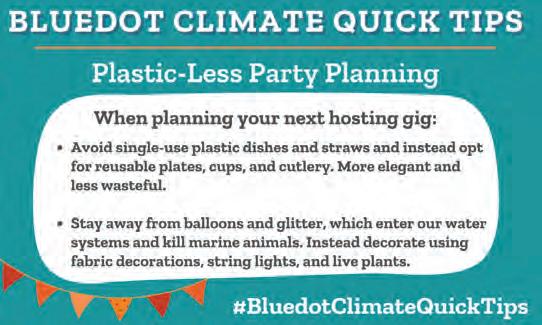
SUBSET AND SUPERCIRCLE collaborated to create a recycling program for old undergarments that can earn you up to $25 off of your next purchase with Subset. Gather at least five laundered undergarments in any condition that you are ready to part ways with, pack them in a box or container from home, and use the free shipping label provided by Subset to send them off. You will receive $25 in credit for your next purchase and your old undies will earn a second life as furniture padding, insulation, and more.
It’s worth checking with Community Services or Chicken Alley thrift store to see if they’ll accept your still-working car seats. Target hosts a bi-annual car seat trade-in event where guests can bring in any type of old car seat and receive a 20% off coupon to be used toward select baby gear. These events are typically held on Earth Day in the spring and once more in the fall. During these events, drop-off boxes for the old seats can be found near Guest Services in-store at any Target throughout North America. Materials from your old car seat will be used to create new products such as buckets, carpet padding, and more.
Greendisk will supply you with shipping materials so you can send in your outdated techwaste. They will properly recycle and dispose of CDs, DVDs, VHS, audio cassette tapes, and more.
When your holiday decor has exhausted its merrymaking for you, they might still have life in them to deck someone else’s halls. For holiday decor that’s still in working condition, donate to Chicken Alley or Goodwill. Lights contain glass, plastic, and copper, and those components can therefore be recycled. Take your no-longer-working holiday lights to big offIsland hardware stores, such as Lowe’s, Home Depot, and Ace.
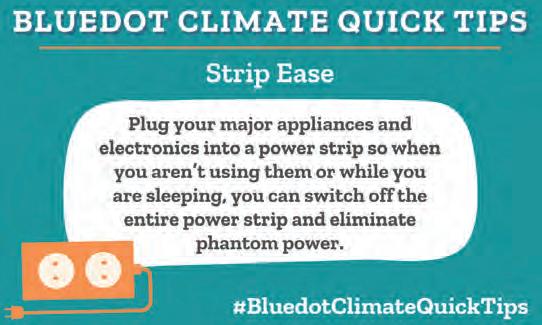
While the greenest coffee pod is the reusable one, makers of disposable coffee pods are recognizing that people want the convenience without the guilt. Consequently, some companies, such as Nespresso, are offering recycling options. Keurig’s K-Cups and Tassimo’s T-Discs are recyclable in your municipal stream but you must peel off the foil top and empty out any coffee grounds before putting them in the bin.
Food subscription services are rising in popularity, and while they can be a sustainable choice, they can also leave you with an excess of cold gel packs. Donate excess packs to the MV Food Pantry. If not, cut open your cold pack and remove the goo inside of it. Let the goo dry out before throwing it in the trash, and allow the plastic wrapper to dry before recycling it.
Terracycle’s Bausch + Lomb One by One free recycling program offers thousands of drop-off locations for your used lenses and blister packs. You can also send in other eye care products including eye drop packaging and contact lens containers with Terracycle’s Biotrue Eye Care free recycling program. Send in your unused lenses and solution to the nonprofit, youth-founded organization DonateContacts, where they will redistribute the donations to folks in need who match the same prescription.
Let Blue Jeans Go Green transform your old denim into creative new products, from insulating material for building efforts to pet bed inserts to thermal insulation used in sustainable food and pharmaceutical packaging.
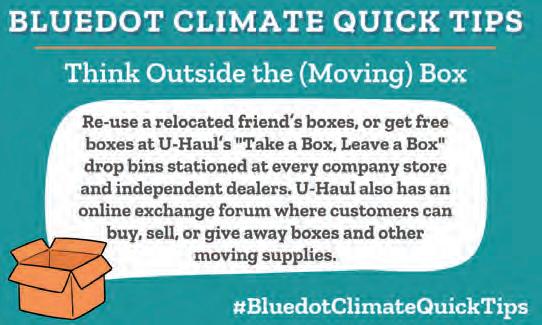
Terracycle’s Gillette Recycling Program offers free shipping labels to send in razors, blades, and plastic packaging. Albatross sends its customers an envelope with every order that customers can send their used safety blades in as a part of their recycling program; they also accept other brands of razors. If you use a straight-edge razor, simply collect the blades in a recyclable metal container and recycle them with your tin cans and other metals.
Whether they are run down from blasting music or they were accidentally washed with the laundry, earbuds and headphones are a common e-waste item. Best Buy’s Electronics and Appliances Recycling Program will recycle them for free, accepting three items a day per household. Apple will send you a prepaid shipping label so you can send in your old headphones to be recycled. Many manufacturers including Sony and Bose will take back their earbuds and headphones to be refurbished or recycled.
You might be done with your old laptop, but it can still be of use to someone. The nonprofit Computers with Causes accepts old tech items and donates them to students, foster children, shelters, disabled US veterans, and a number of other causes. World Computer Exchange is another nonprofit that will donate your unwanted tech items to people in need.
If you’d like to get some cash for your electronics, sell them to Decluttr or through Amazon’s trade-in program, which will give you Amazon gift cards in return. If you’re looking for more options, check out SellCell, a site that compares buyback companies and helps you find the best deal.
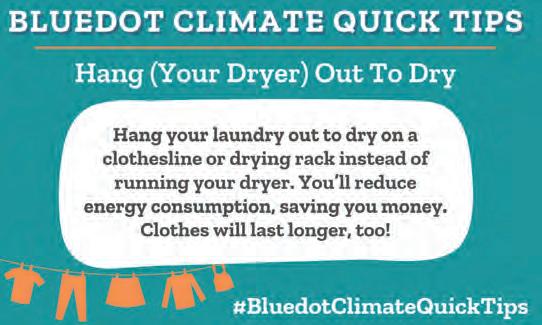
If your electronics are well and truly of no use to anyone, ensure that they get disposed of properly. Best Buy will accept three items daily at its stores. Goodwill has partnered with DellReconnect to recycle e-waste at any of its 2,000 locations. Staples will take your e-waste for free, and also recycled ink and toner cartridges. Or send your items to Amazon (via a free mailing label).
The fur industry is on the decline, and awareness of the animal cruelty behind the once-chic fur coat has spread. You might not be shopping for these pieces anymore, but if you have an old fur coat gathering dust, there are organizations ready to help. PETA, for one, is taking these remnants of a brutal industry and turning them into something positive for those in need. Mail your unwanted fur to PETA, and they will donate it to the homeless or refugees.
Habitat for Humanity accepts these new or gently used items, including furniture, household appliances, and building materials.
St. Jude’s Ranch for Children will accept greeting cards — used or new ones that you just never got around to sending. Children at the hospital will attach new backs to the cards to create new cards, which St. Jude’s sells on their website. The only cards you cannot send in are Hallmark, American Greetings, and Disney (for copyright reasons) and cards from other nonprofits.
Terracycle’s free recycling program with D’Addario offers mail-in and drop-off options for all types and
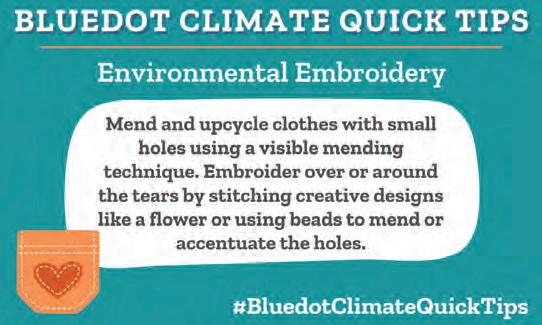
brands of instrument strings, including electric guitar, bass, acoustic guitar, nylon, and orchestral strings, which they will properly recycle.
Poshmark and ThredUp aren’t just for big people’s clothing.
Do your kids have an entire menagerie of stuffed friends that need new homes? Consider donating them to other children for comfort in emergencies via Stuffed Animals for Emergencies.
LampMaster offers a light bulb recycling kit, complete with a prepaid shipping label so that you can send in CFL, LED, HID/HPS/Metal Halide and Incandescent light bulbs for proper recycling. They ship out recycling kits to Canada, the U.S. and its territories. Many retailers such as Home Depot, Lowe’s, and Ikea, accept CFL light bulbs for recycling, simply contact your local retailer to see if they are a participating location.
If you’re letting old mascara wands pile up in your bathroom, unsure about how to recycle them, there’s an adorable solution for you. Wands for Wildlife repurposes these beauty tools for use by wildlife caregivers to brush ticks, dirt, and fly larva from orphaned or injured animals. Mascara wands are suitable for this task because of their soft, fine bristles.
October 29 is Take Back Day — when the DEA urges all of us to get rid of no-long-needed prescription medications to help avoid misuse or overdoses. Do not flush or dump medications down the sink, where they find their way into waterways and, potentially, harm water creatures. If you miss Take Back Day, ask at your local pharmacy, or visit this site for other disposal locations.
At-home oil changes are relatively easy and cost efficient, but what do you do with all of that old motor oil and the old filters? Off-Island all Autozone and O’Reilly’s locations and some Walmarts accept used motor oil and oil filters free of charge. Check mvrefusedistrict.com/hazardous-waste-marthasvineyard.html for hazardous waste drop-off days.
If you’re saddled with a few cans of not-quite-empty latex paint, the EPA suggests you expose it to air until it dries into a solid, or mix with shredded newspaper or kitty litter, let dry, and then dump in your household garbage.
If your paint is oil-based, it’s hazardous waste (which should also give you pause about using it in you your home), check with your local transfer station about hazardous waste days.
Got a piano that you never really play taking up space in your living room? Piano Adoption accepts free pianos and keyboards. Just add a listing to their website and shoppers looking for a free piano in your area will contact you if they’re interested in purchasing. The buyer and seller then coordinate the exchange.
What to do with all those empty prescription pill bottles? While they’re ubiquitous in North America, they’re much needed in other countries. Matthew 25: Ministries accepts donations of empty plastic pill bottles for inclusion in shipments of medical supplies, according to its website m25m.org.
When a high school student died in a car accident, her family and friends decided to carry on with her incredible initiative to provide prom dresses to anyone


more information and pricing, contact
who needed one. Thus Becca’s Closet was born, with chapters through the U.S. We should all leave a legacy so beautiful.
Clean out your kitchen’s designated takeout sauce packet drawer with Terracycle’s free sauce packet recycling program. They partnered with Taco Bell to offer free shipping labels so you can send in your empty sauce packets (all brands and types) to be properly recycled.
Smartwool’s “Second Cut” Project will recycle donated socks into dog beds. They will take any brand of socks. Retold Recycling provides a free and easy mail-in service for old socks that will then be donated to thrift stores, charities, recycling centers, and more for reuse or proper disposal.
Whether your shoes still have some spring in their step or their treads are truly dead, there are organizations that will help you keep them out of the landfill.
• Soles4Soles will find feet somewhere in the world that need your gently used shoes. And you can ship your donation for free!
• OneWorldRunning puts still-usable athletic shoes to work helping military recruits and athletes around the world.
• More Foundation Group magically turns donated shoes into reforestation projects and co-op farming initiatives around the world. Get a box and start collecting — all free!
• HavASole, whose founder grew up in a shelter without good shoes, will get your shoes to organizations around the US.
• It’s From The Sole puts your old shoes on the feet of marginalized people around New York City and the world.
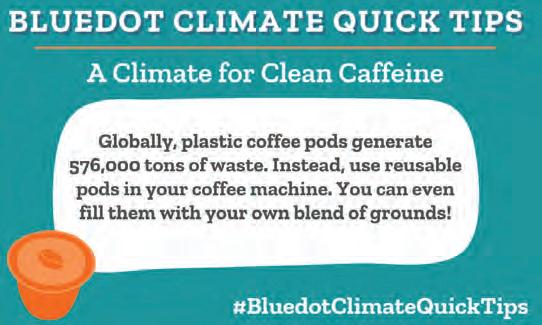
• GotSneakers? is an organization that says it will pay you to clean out your shoe closet. Send away for a post-paid bag, fill it, and your still-good sneakers will be given to someone who can use them and your no-good sneakers will be recycled.
• TerraCycle will take pretty much any footwear (no in-line skates, please) but their program isn’t free. Nonetheless, it’s a great way to do a footwear drive at your school or church and ensure shoes aren’t going to the dump.
• Use your ASICS shoebox to ship back old or unwanted shoes for free.
Some manufacturers, including First Alert, offer mail-back services where you can send your old detectors, you only have to pay the postage. Curie Environmental Services and EZ on Earth offer their own mail-in recycling services for these life saving electronics for a fee.
Tom’s of Maine has a first-of-its-kind tube that can be recycled in home recycling bins – including the cap. Parent company Colgate-Palmolive says it will share technology with others but, thus far, Tom’s is the only brand you can toss in the recycle bin.
Is your wedding dress taking up too much space in your closet? You can make someone else’s big day memorable and make some extra money by selling it through stillwhite.com. You pay a one-time fee, post some photos and videos of the dress, and get connected with potential buyers all through the website.
If your vinyl records are starting to sing a sorry tune, donate them to any local secondhand store. However, if they are damaged beyond use, consider using them for decorative crafts; Martha Stewart offers inspiration: marthastewart.com/8280507/vinyl-record-craft-ideas.
Yoga mats that still have some life left can be used for people or pet beds at shelters. But if your mat has truly hosted its last downward dog, put it to rest. Terracycle offers a Sporting Goods Zero Waste Box starting at $142 that you can use to ship your yoga mat and other sporting equipment for proper disposal.
To : Bluedot Living
From: Mass Audubon
Subject: Mass Audubon Leads
Horseshoe crabs have been around for 350 million years — since dinosaurs roamed the Earth. Now, thanks to an effort spearheaded by Mass Audubon, they’re better protected from suffering the same fate.
In March, the Marine Fisheries Advisory Commission (MFAC) approved a ban on harvesting horseshoe crabs during the spring spawning season (April 15 to June 7). This is the period most horseshoe crabs breed and lay eggs, with a single female horseshoe crab capable of laying up to 80,000 eggs in one season.
Although it’s well understood that harvesting any animal during breeding is a practice that harms repopulation efforts, horseshoe crabs were an unfortunate exception because they are used as bait and are valued highly by the biomedical industry for compounds in their blood.
But now, thanks to support from the state Division of Marine Fisheries and more than 2,600 people who submitted written comments in support of the protections and/or spoke out at public hearings, our decades-long quest for stronger horseshoe crab protections has been realized.
The new regulations are also important for the sustainability of migratory shorebirds, who feed on horseshoe crab eggs at many beaches along the Massachusetts coast.

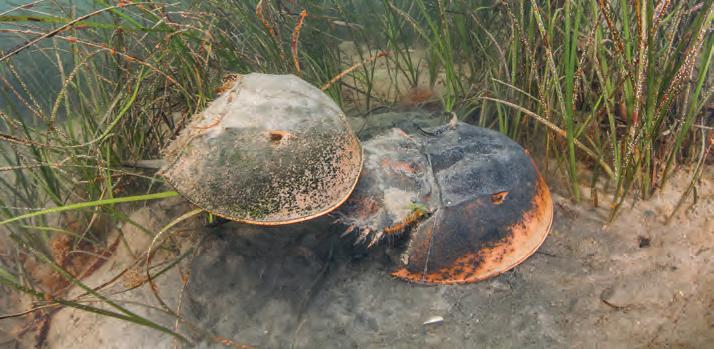

The new regulations are also important for the sustainability of migratory shorebirds, who feed on horseshoe crab eggs at many beaches along the Massachusetts coast.
While the new horseshoe crab protections are a step in the right direction, they aren’t enough to restore populations to levels we saw 50 to 100 years ago.
Even with a ban on harvesting during the spring spawning season, up to 140,000 horseshoe crabs will be harvested each year to use as bait for whelk, which is also an overfished species. Furthermore, up to 200,000 horseshoe crabs are allowed to be captured each year by the biomedical industry to be bled for a protein in their blood
called Limulus Amebocyte Lysate (LAL), which is used by medical device manufacturers to test their products for the presence of endotoxins — bacterial substances that can cause fevers and even be fatal to humans.
Researchers estimate at least 15 percent of those captured but released crabs die after being bled.
To restore horseshoe crab populations to healthy, historic levels, we must ultimately end their use as bait while simultaneously working to find alternative opportunities for those who depend on this unsustainable practice. In the long run, we’re optimistic that synthetic alternatives for horseshoe crab blood will become widely accepted and horseshoe crabs will once again be a regular sight on local beaches.
Shortly after the March vote, Mass Audubon held a rally on the Cape where more than 100 supporters celebrated a hard-fought win. They held homemade signs, wore costumes, and even performed a sea shanty dedicated to horseshoe crabs.
The win was a reminder of how a group of people who support nature and refuse to be deterred unite around a shared cause to shape environmental policy.
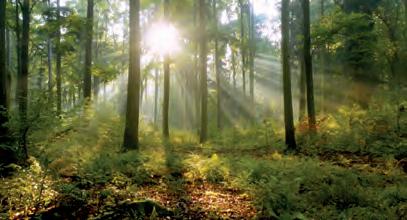

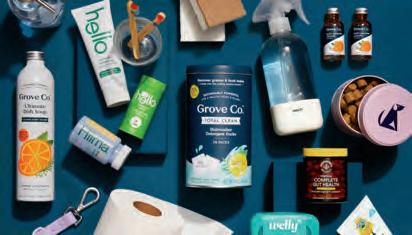
On-the-ground reporting highlighting a universe of ideas and changemakers.

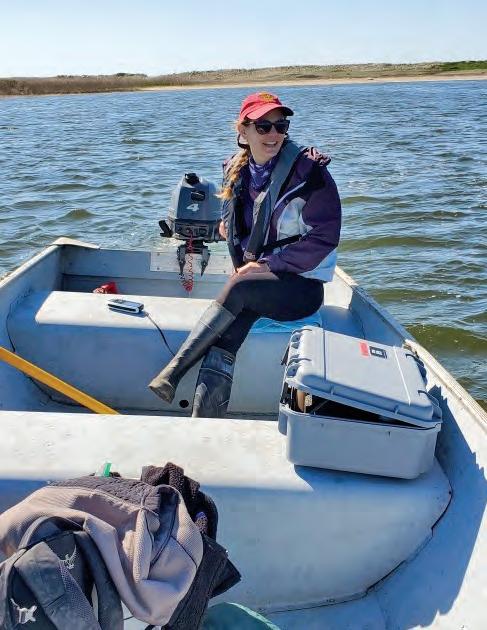

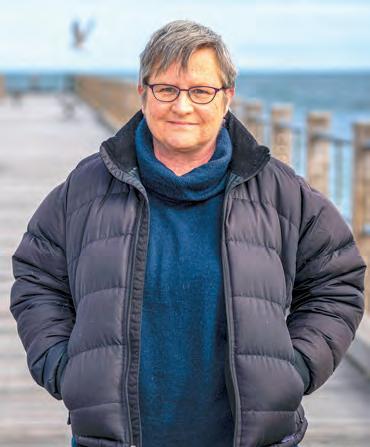
Continued from page 64
“There was one school vacation where I went home, I went for a walk on the beach and I realized that this is what I want to do. I want to have a career where I can be outside and not limited to doing lab work every single day.”
Julie Pringle is passionate about water, and what our local water bodies bring to the table for people, plants, and animals. She serves as the Scientific Program Director at the Great Pond Foundation, where she runs the ecosystem monitoring program, and is also the Deputy Shellfish Constable in Edgartown. Her mission is to connect indicators of water quality to the wellbeing of the creatures and people that depend on the Edgartown Great Pond, and other Island ponds.
Read the rest here: bit.ly/Julie-Pringle
“I think if we’re going to maintain the health of the planet, we need to learn to love it.”
It’s been 25 years since Jonah Maidoff joined the Martha’s Vineyard Public Charter School in its inaugural year. The Charter School has always promoted experiential learning, but Maidoff has been instrumental in making sure environmental education and nature appreciation were a part of that experience. With Maidoff’s zeal, and a little help from the Martha’s Vineyard Vision Fellowship, Charter School students have paddled the West Branch Penobscot River, hiked the Appalachian Trail through the White Mountains, monitored permafrost in Alaska, and studied sustainable farming in Cuba. That’s not even to mention the impactful work they’ve done right here on the Island.
Read the rest here: bit.ly/Jonah-Maidoff
“Our coastline is changing in ways that are going to affect the reasons people come to visit here — it all comes back to the fact that the land and the water are what keep us alive, and if we don’t protect these resources, what do we have?”
Martha’s Vineyard Commission Climate Change Coordinator Liz Durkee has loved Martha’s Vineyard from the moment she first visited as a child. Over the years, Durkee has seen her Island home change a lot. And with inevitable environmental changes on the horizon, she is working with the regional planning agency to proactively address issues such as receding salt marshes and increasing storm intensity and frequency. For Durkee, maintaining our beaches, open spaces, and woodlands is essential to the fabric of life here on the Vineyard.
Read the rest here: bit.ly/Liz-Durkee
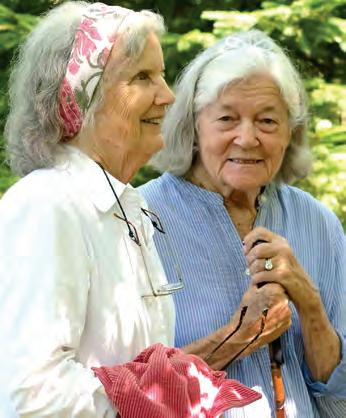
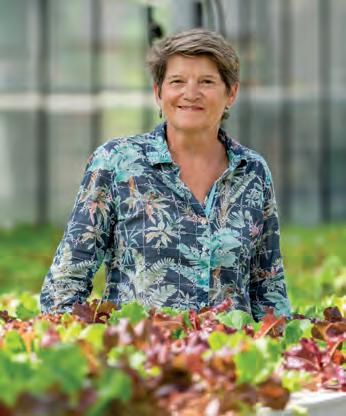
“Food is more than just nutrition. It is also love, it is family, it is community, it is tradition and history.”
Retired Island Grown Initiative Executive Director Rebecca Haag came to the Island with an extensive background in social justice. During her time at IGI, she bolstered Martha’s Vineyard’s food security network through a merger with the Island Food Pantry, and established a composting program that also educates Islanders (of all ages, backgrounds, and economic circumstances) about composting and at-home agriculture. For Haag, mitigating food waste and maximizing access to healthy, locally grown food is something she will continue to advocate for.
Read the rest here: bit.ly/Rebecca-Haag
“My dream is that everybody should be able to step outside their house and find a beautiful place to walk.” –Pam Goff
“I’m not so sure about heroes. Maybe something more like movers and shakers.” –Tess Bramhall
For Tess Bramhall and Pam Goff, overdevelopment is an unrelenting threat to the Island — it diminishes our natural landscapes, fragments our forests and farms, and impacts our streams and ponds. The Land Protection Fund and the Martha’s Vineyard Land Bank, which Bramhall and Goff helped establish, conserves land by traditional means, such as purchasing undeveloped land outright in collaboration with Island conservation organizations, as well as supporting creative initiatives such as Village and Wilderness, which helps community-based organizations create innovative conservation solutions.
Read the rest here: bit.ly/Bramhall-Goff

“Seeing Martha’s Vineyard was a huge eye-opener — I saw what was possible in a place where people really care about the environment.”
Over the decades, retired Vineyard Conservation Society Executive Director Brendan O’Neill has been an instrumental defender of natural spaces on-Island. O’Neill, who first visited the Vineyard with his family in 1971 and was struck by the rural character and unique landscapes here, has been involved in many high-profile land protection and designation matters during his time at VCS. His passion for preservation has guided the organization in helping create many of the open and wild spaces we enjoy today.
Read the rest here: bit.ly/Brendan-ONeill
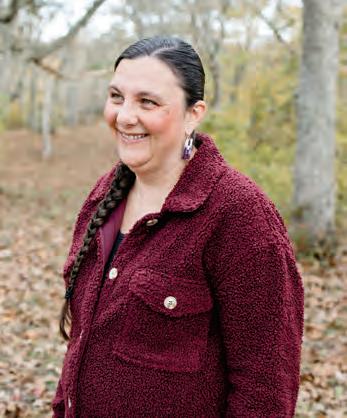
“How do we heal our communities and how do we preserve them so they can thrive? We need to restore our ways of sustainability, which is our food systems…”
Jennifer Randolph is the founder and executive director of Kinship Heals, an organization that helps survivors of domestic and sexual violence in the Wampanoag community, while tackling the issues — poverty, inadequate housing, disrupted food systems, and more — that give rise to it. Restoring a healthy community, Randolph insists, creates a healthier world.
Read the rest here: bit.ly/JenniferRandolph
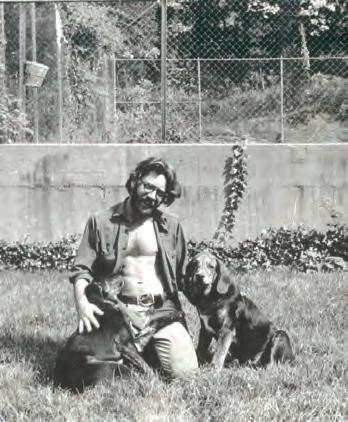


“Those lessons learned locally have a wider application. … Business is the most powerful force in the world — the one that has the potential to change the world most completely and quickly due to its lack of constraints. South Mountain demonstrates, as do other 6,500 B-Corps, how business can be, if it chooses to, a force for good in all those arenas.”
John Abrams, the recently retired founder of South Mountain Company, has been dedicated to sustainable housing and creating a cooperative corporate structure for his employees. For Abrams, his preservation-related focus lies in making sure the Island community can continue to thrive despite the economic impacts of climate change and environmental degradation. In particular, Abrams has been a stalwart supporter of a Martha’s Vineyard Housing Bank, and has advocated for sustainable building practices in his own company (a certified B-Corp), and in local regulatory processes.
Read the rest here: bit.ly/John-Abrams
“Media coverage doesn’t highlight a lot of positive projects or events. I think a lot of students are already navigating so many other aspects of life, and they can become kind of lost on what to do regarding the climate crisis. I think creating a centralized space where students can learn from each other is really important. And I’m excited to be a part of it.”
During her time at the Martha’s Vineyard Regional High School, Annabelle Brothers influenced climate policy and elevated environmental awareness around the Island. She led the MVRHS Protect Your Environment Club, served as a subcommittee member of the Martha’s Vineyard Climate Action Plan, and continues to serve as a student advisor to the Bluedot Institute — Bluedot’s nonprofit dedicated to inspiring and supporting young climate journalists. Brothers’ interest in environmental issues was piqued by the Plastic Free MV movement.
Read the rest here: bit.ly/Annabelle-Brothers
“People go to Disneyland to see Mickey Mouse, and people used to come to the Vineyard because they could grab a rake or just a bucket and go get dinner.”
The wild shellfish industry was booming back in 1976 when Rick Karney washed ashore to take a job with the late Michael Wild, who at the time was serving as Coastal Planner for the Martha’s Vineyard Commission. Wild, a longtime conservationist, sought to bring together all the local shellfish constables, along with representatives from each Island town, to hire a dedicated shellfish biologist who would help establish a regional aquaculture program, and construct and oversee a public hatchery. Karney, who currently holds the title of Founder and Director Emeritus of the Martha’s Vineyard Shellfish Group, is wild about all things bivalves. He is currently assisting the shellfish group in occasional propagation, and is passionate about educating Island youth about aquaculture and the vital role shellfish play in our local ecosystem.
Read the rest here: bit.ly/Rick-Karney
For the past few years, Bluedot Living has highlighted some outstanding Islanders who have worked tirelessly in their respective corners of the community. These activists, conservationists, students, teachers, nonprofit leaders, and more, are moving us all in the direction of sustainability and reverence for our natural environment. From a small group of West Tisbury School students

“The community work I do is just seeing what is happening and finding a place where I can be helpful in getting people together to make a change. The work I do in Aquinnah is on all these different levels, starting at our own house and trying to move toward being a fossil-fuel-free home.”
Since Island Grown Initiative was established in 2006, Noli Taylor has been an integral part of this local nonprofit that connects Islanders with essential resources and education related to food, food production, and food waste. Now a co-director of IGI, Noli is leading the charge (alongside a number of other essential groups) on the Vineyard in getting people to understand and appreciate the value of healthy, affordable, and accessible food.
Read the rest here: bit.ly/Noli-Taylor
Continued on page 61
spearheading an Islandwide plastic bottle ban with Plastic Free MV, to Rick Karney, who followed his passion for shellfish and aquaculture and eventually created the first-ever solar-powered shellfish hatchery — the enduring work of local changemakers is what allows Martha’s Vineyard to lead the way in preserving and conserving our little blue dot for future generations. – Lucas Thors
“Did you know that plastic doesn’t biodegrade? One hundred percent of the fish in the deepest part of the ocean have plastic in them. We are looking to you to make a better future for us all.”
It all began when a group of kids at the West Tisbury School, led by teacher Annemarie Ralph, convinced many Island stores to stop offering plastic straws with their Straw Free MV campaign. But they wanted to make a bigger impact. Since then, Plastic Free MV (PFMV) has succeeded in getting nonbinding resolutions passed in five Island towns that ban the sale of plastic water and soda bottles under 34 ounces.
Read the rest here: bit.ly/Plastic-freeMV
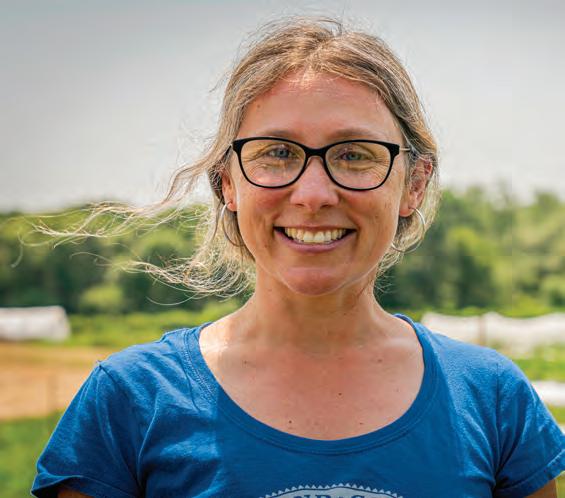
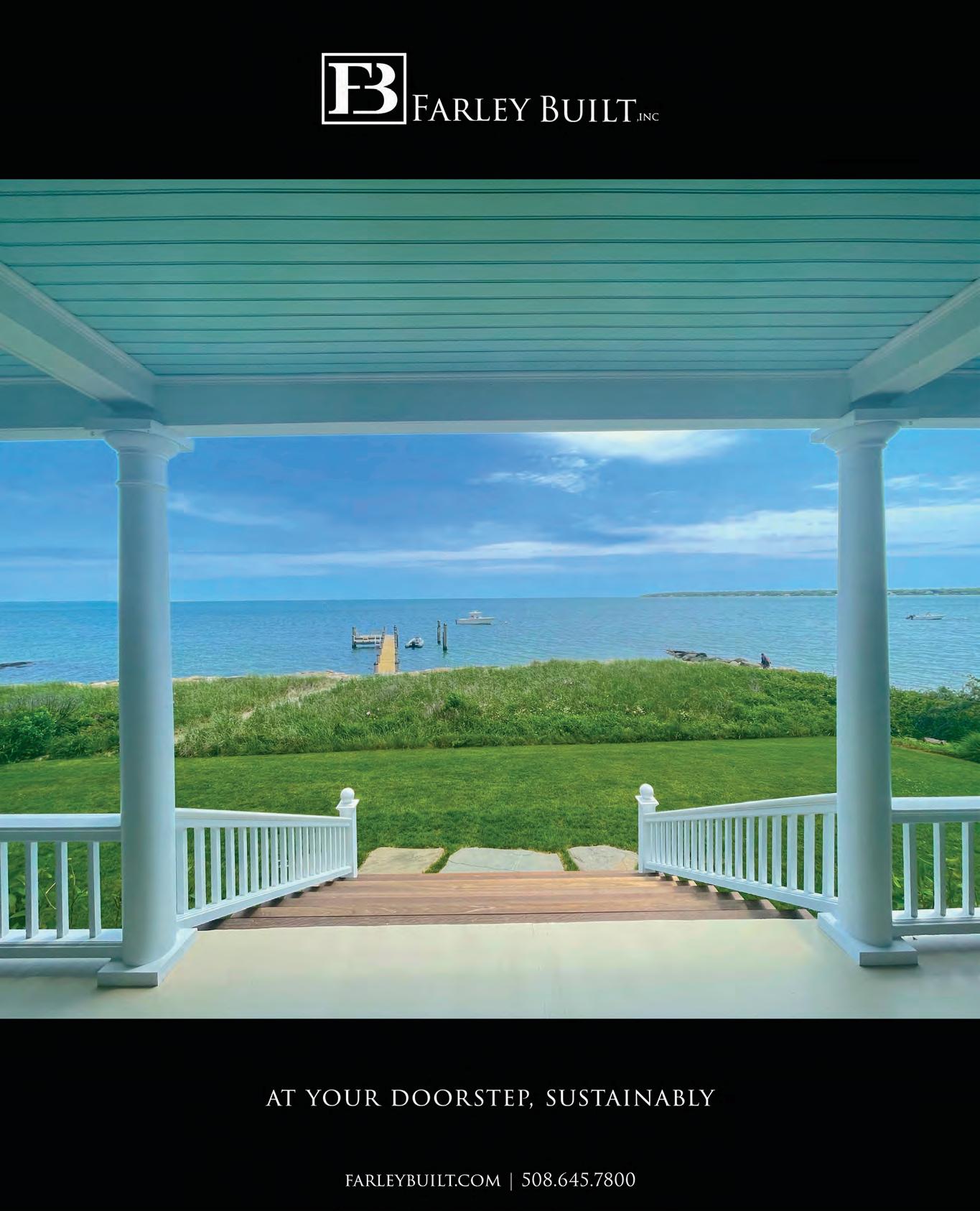


508.696.9999 West Tisbury
508.645.2628 Chilmark

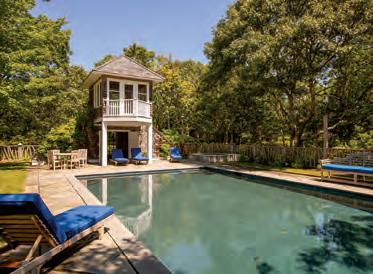
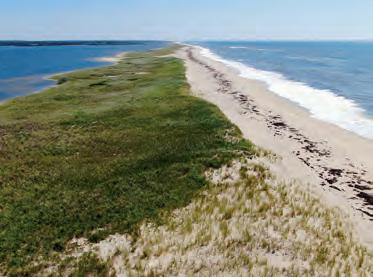

Spectacular 35-acre Boldwater Association waterfront estate on Edgartown Great Pond with breathtaking views across Lyles Bay, Swan Neck Point, The Great Pond, and barrier beach to the ocean. The house was built by Andrew Flake from Mark Hutker’s innovative design, so every room faces the water. The three 2nd floor bedrooms enjoy large balconies, and the 1st floor primary bedroom opens to a garden sanctuary. Additional features include a pool and pool house, two stone wall-enclosed specimen fruit tree meadows, a large field circled by a grand stone wall, and an idyllic lily pond. This property includes 14+ abutting sub-dividable acres. Boldwater offers a private association ocean beach and 150 acres of conservation abutting more conservation lands. Exclusively offered. Exclusively offered for $11,375,000.
An Independent Firm Specializing in Choice Properties for 50 Years 504 State Road, West Tisbury MA 02575 Beetlebung Corner, Chilmark MA 02535
